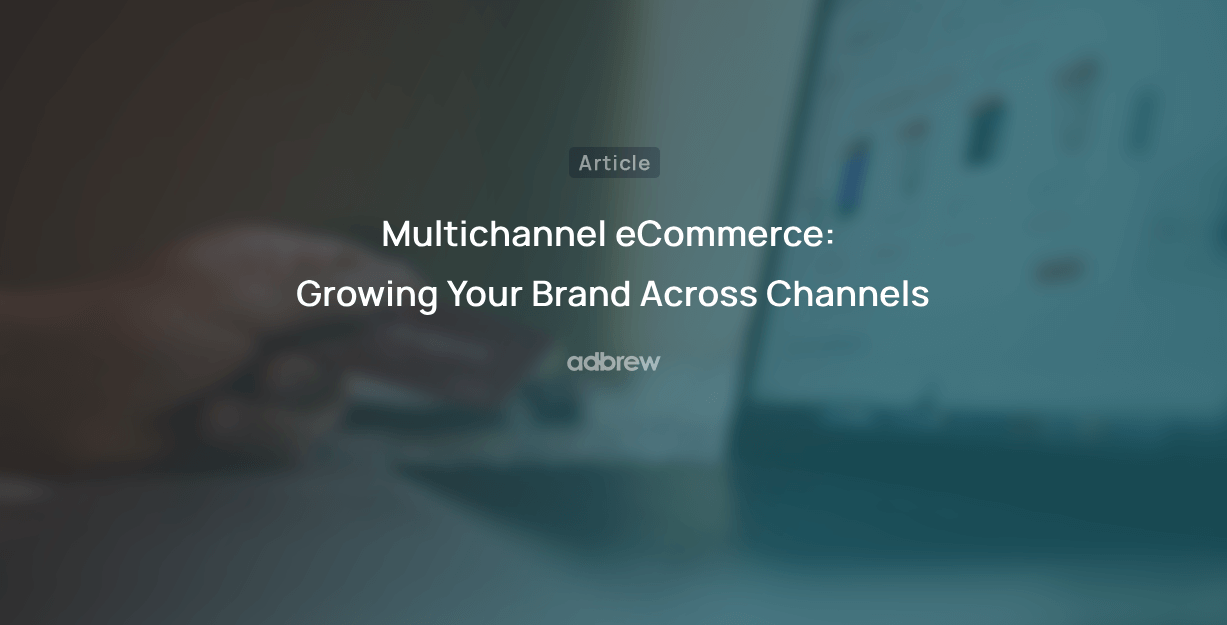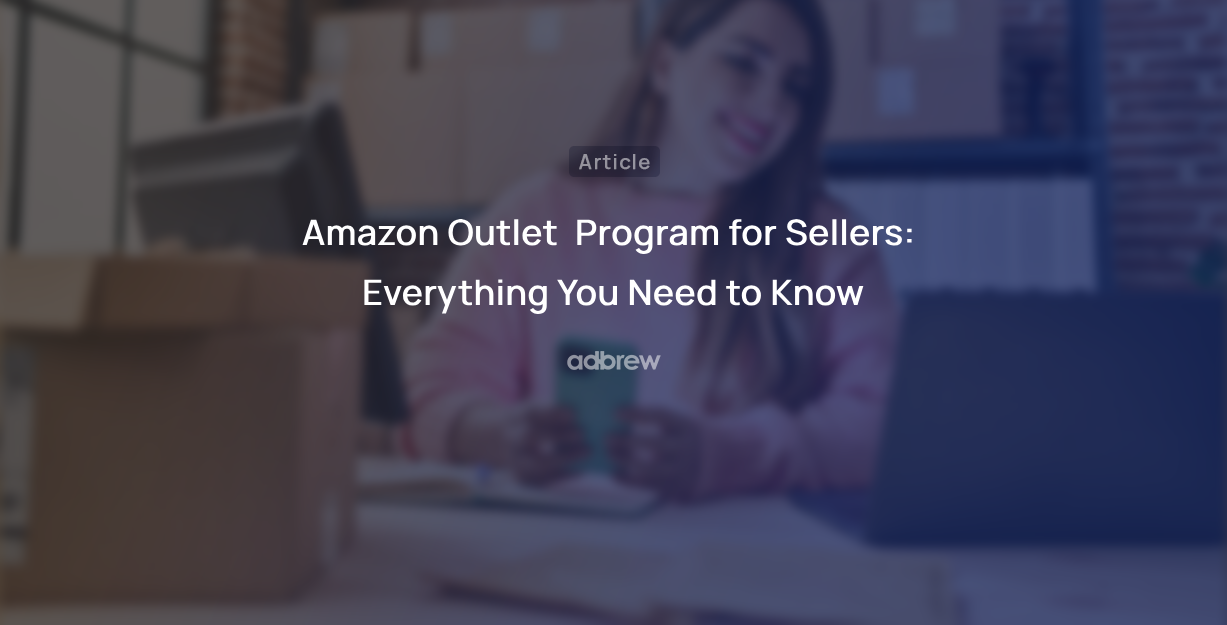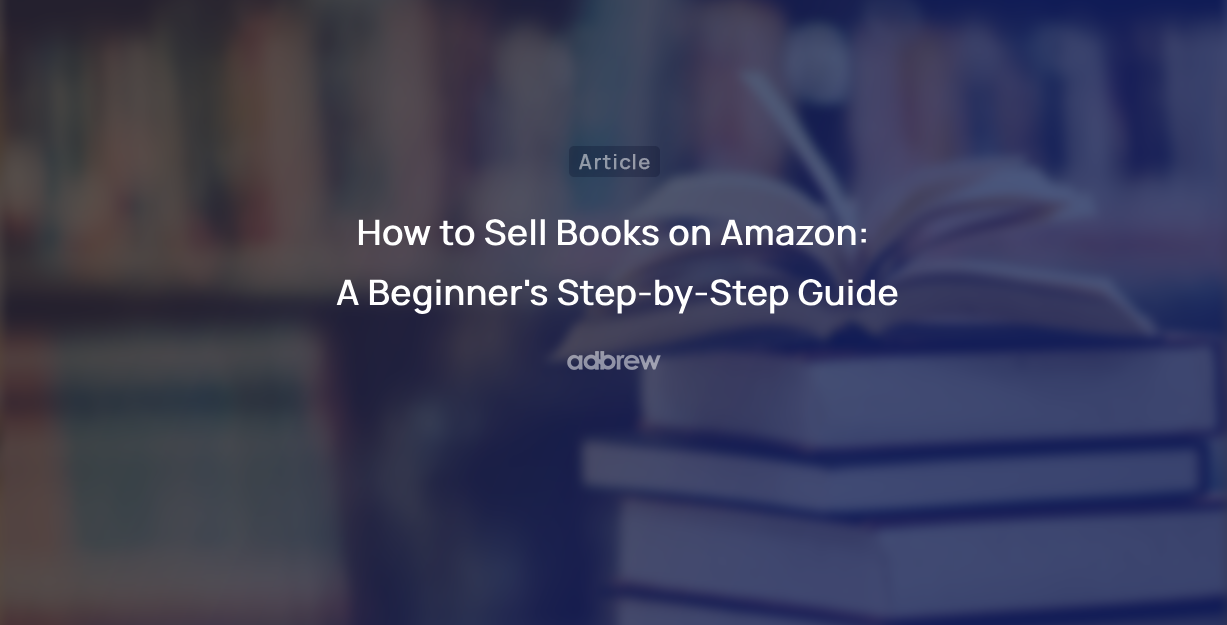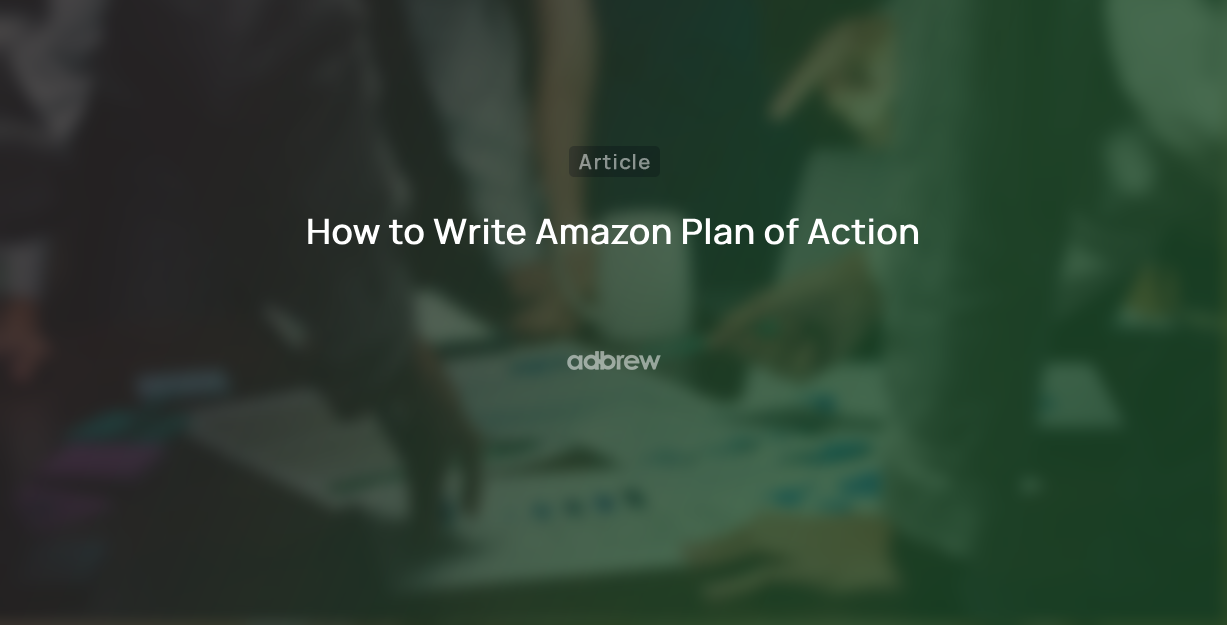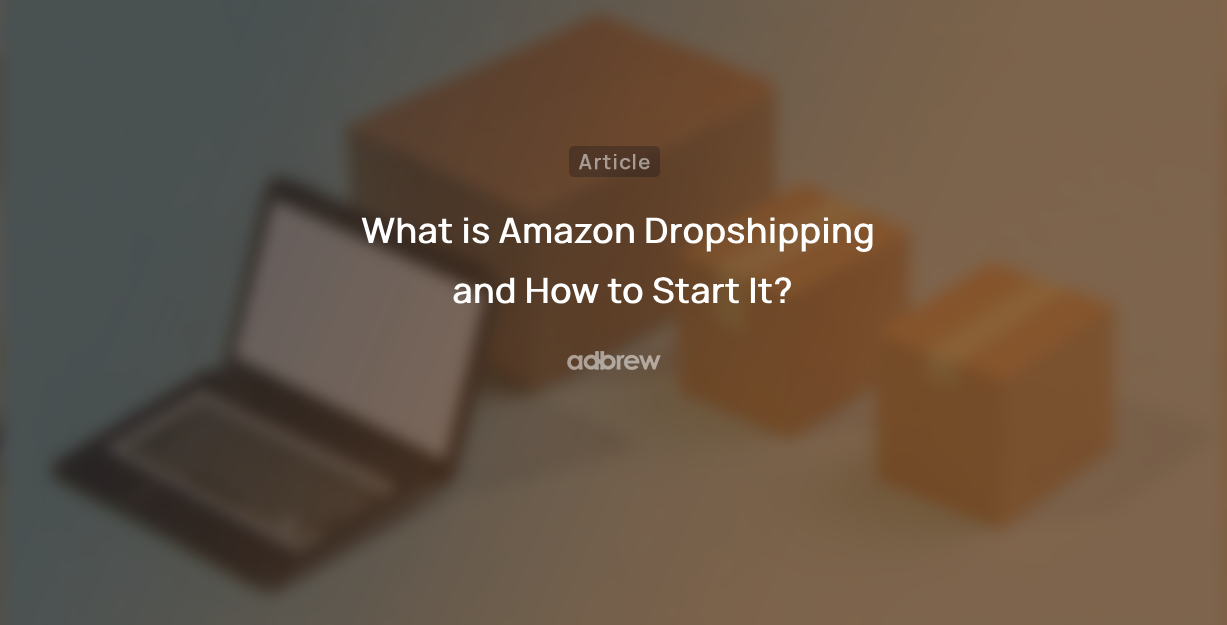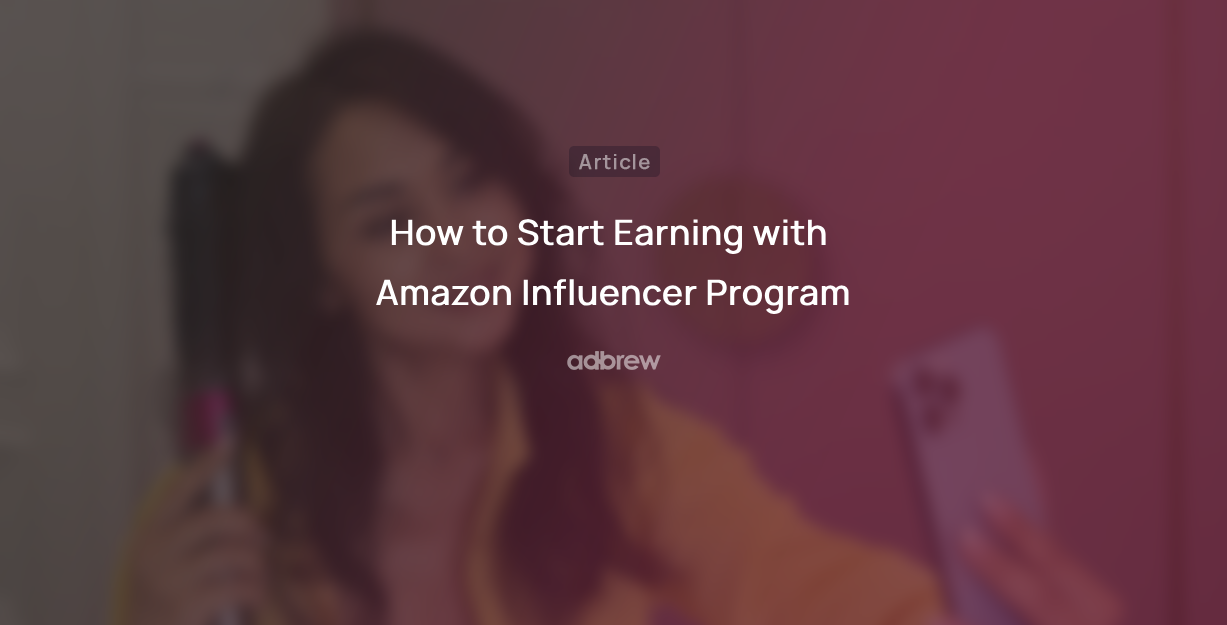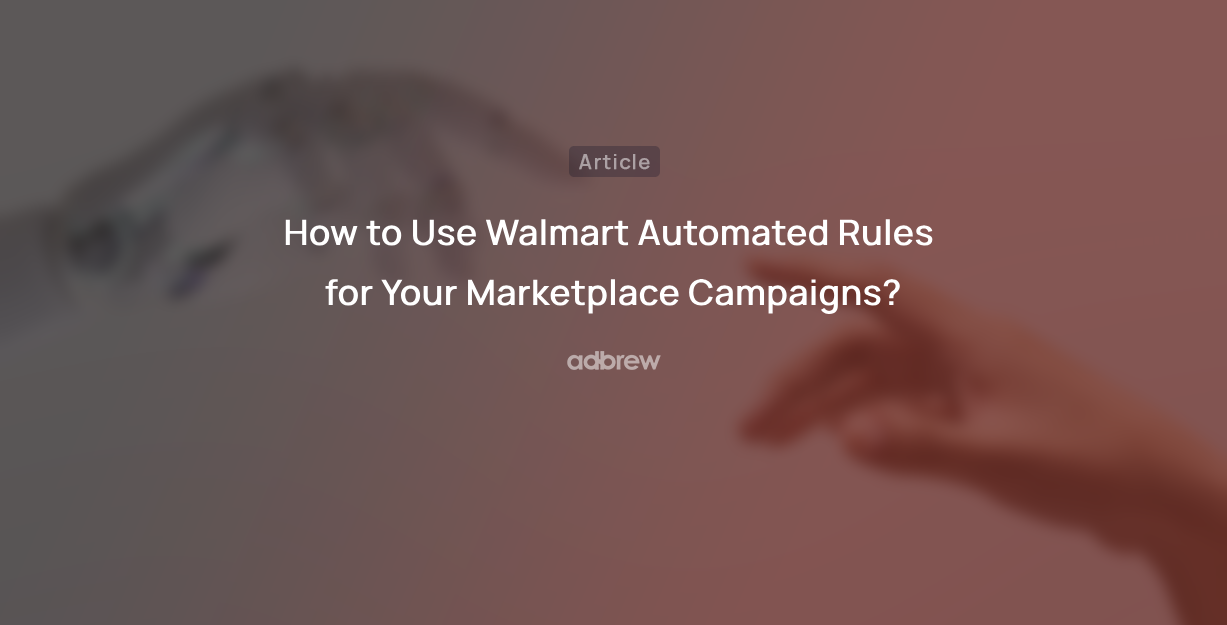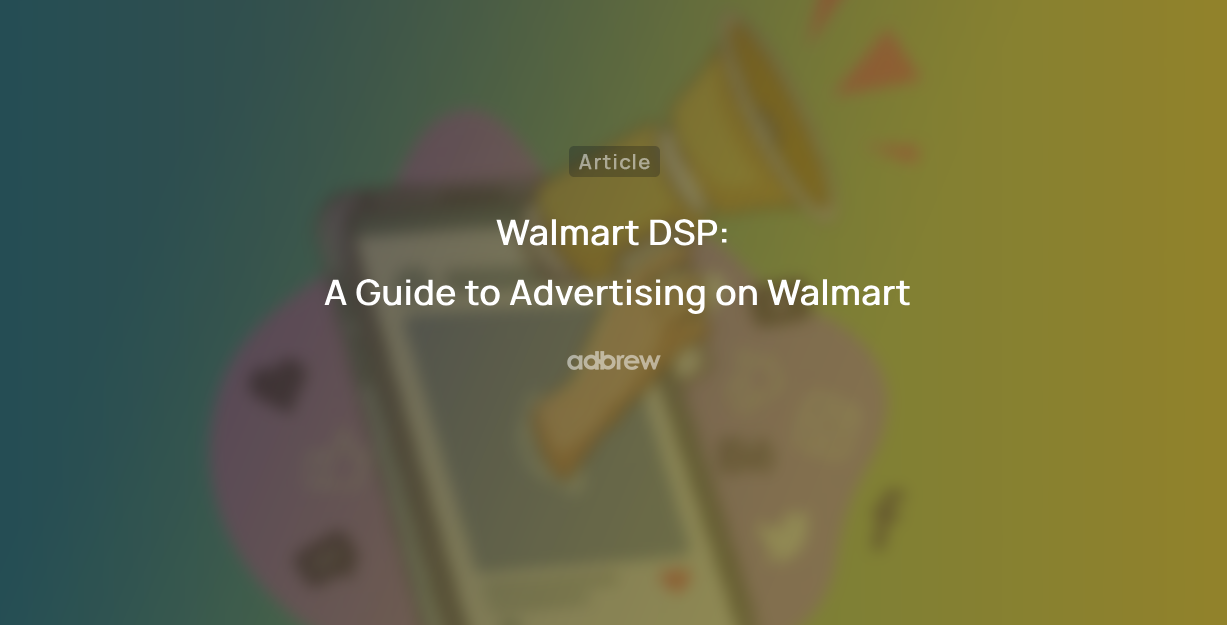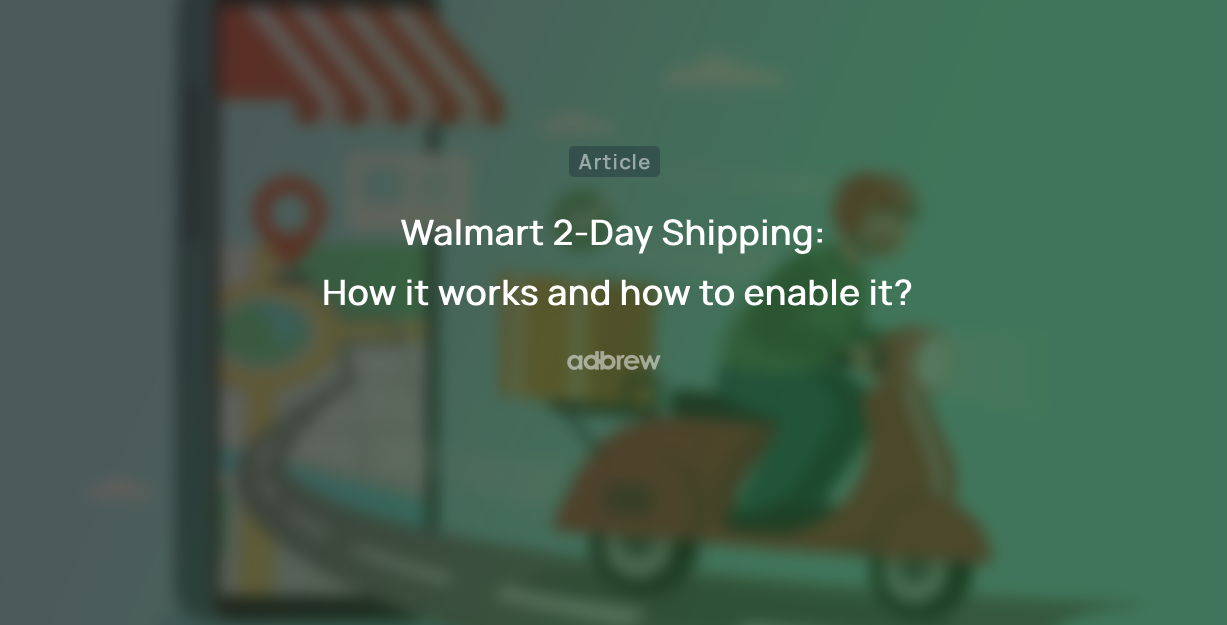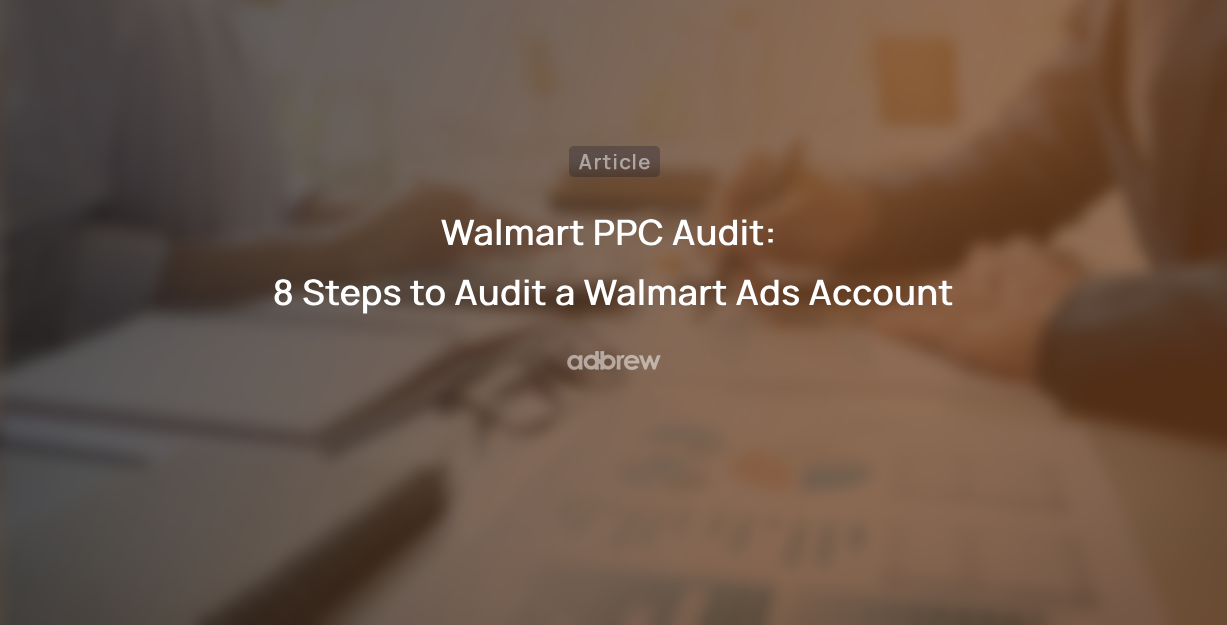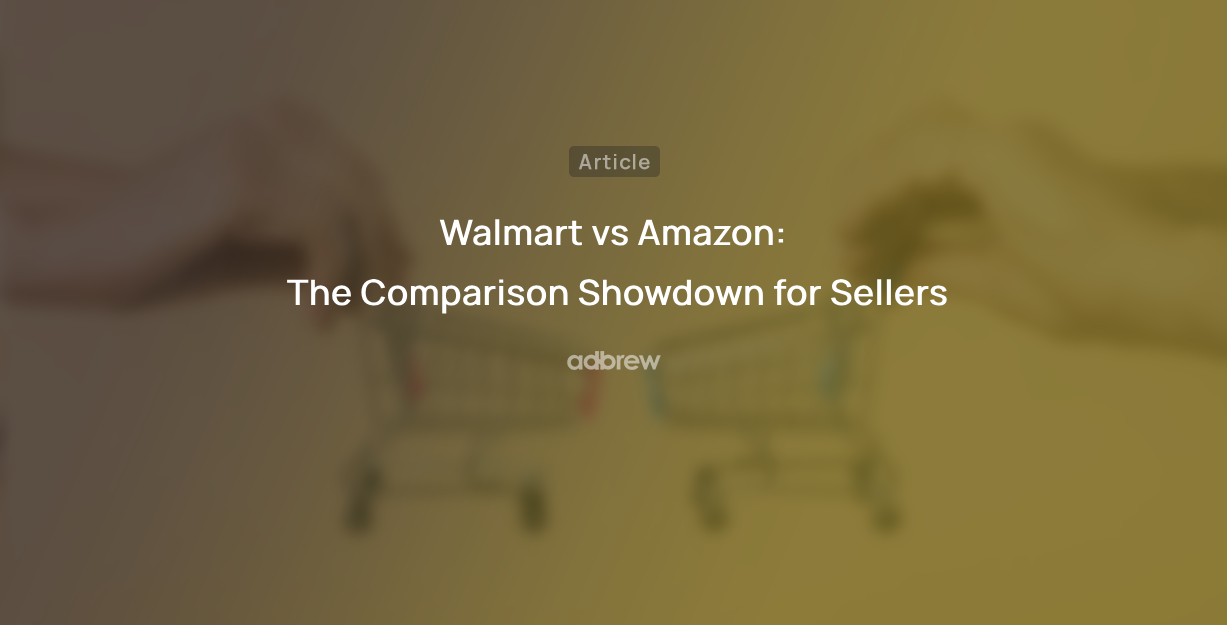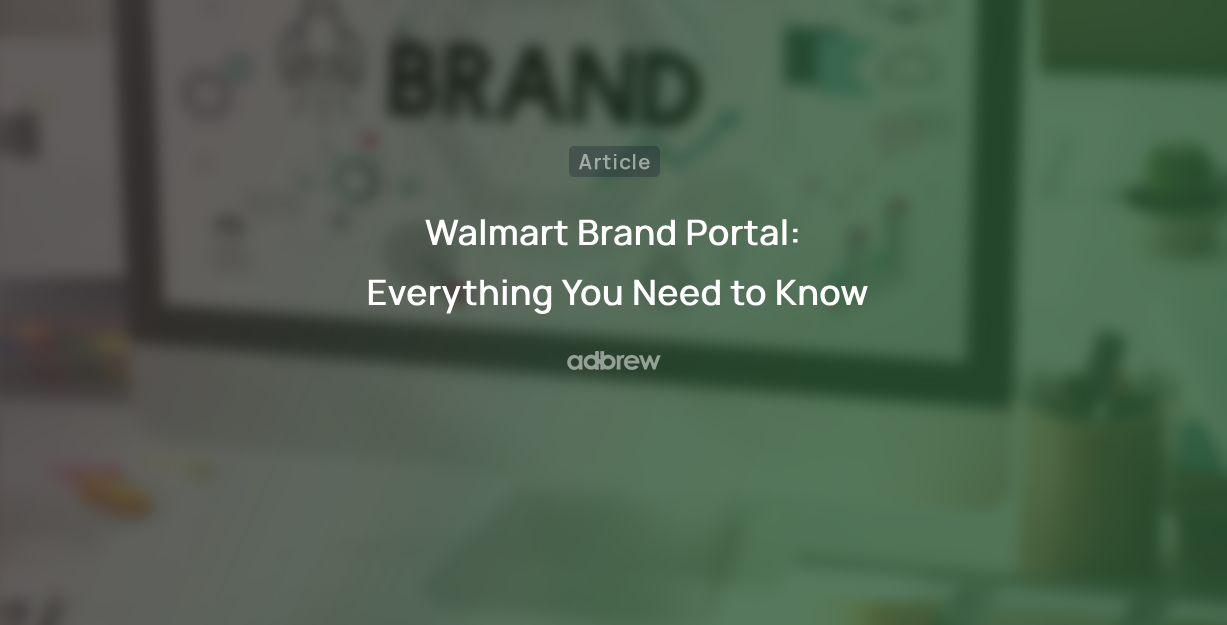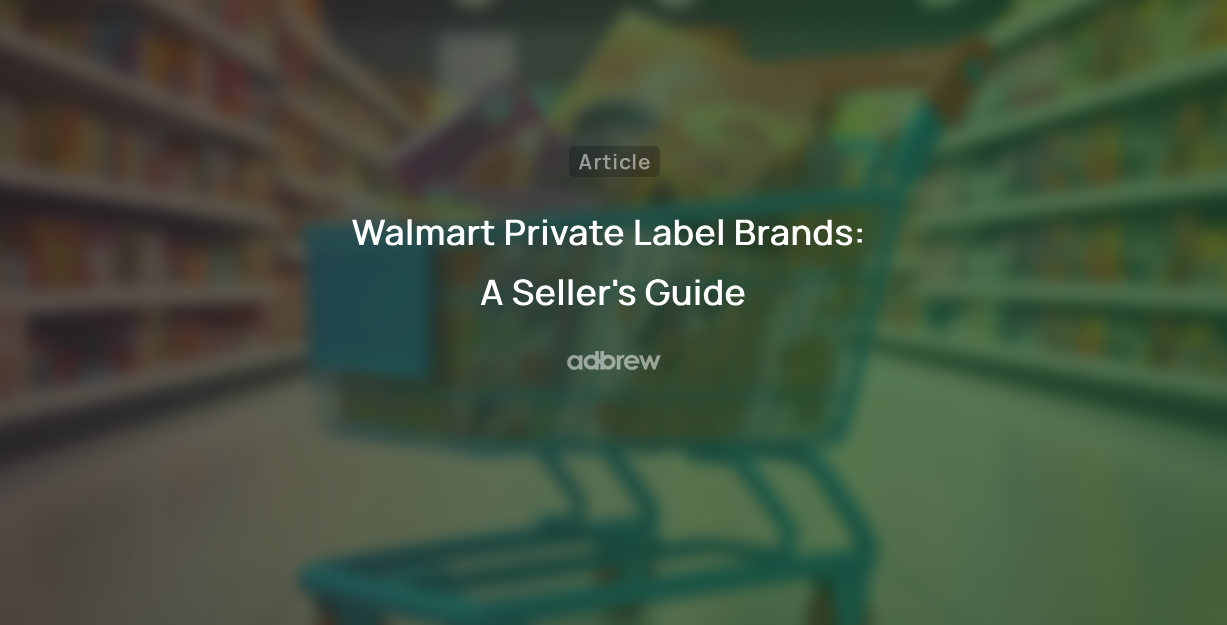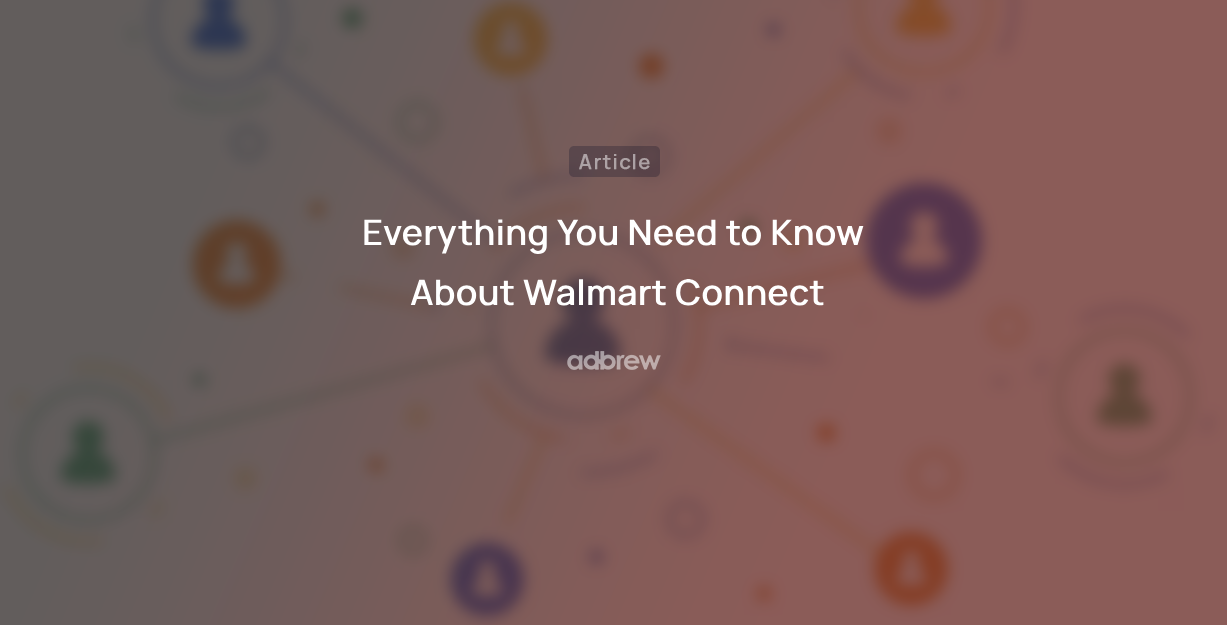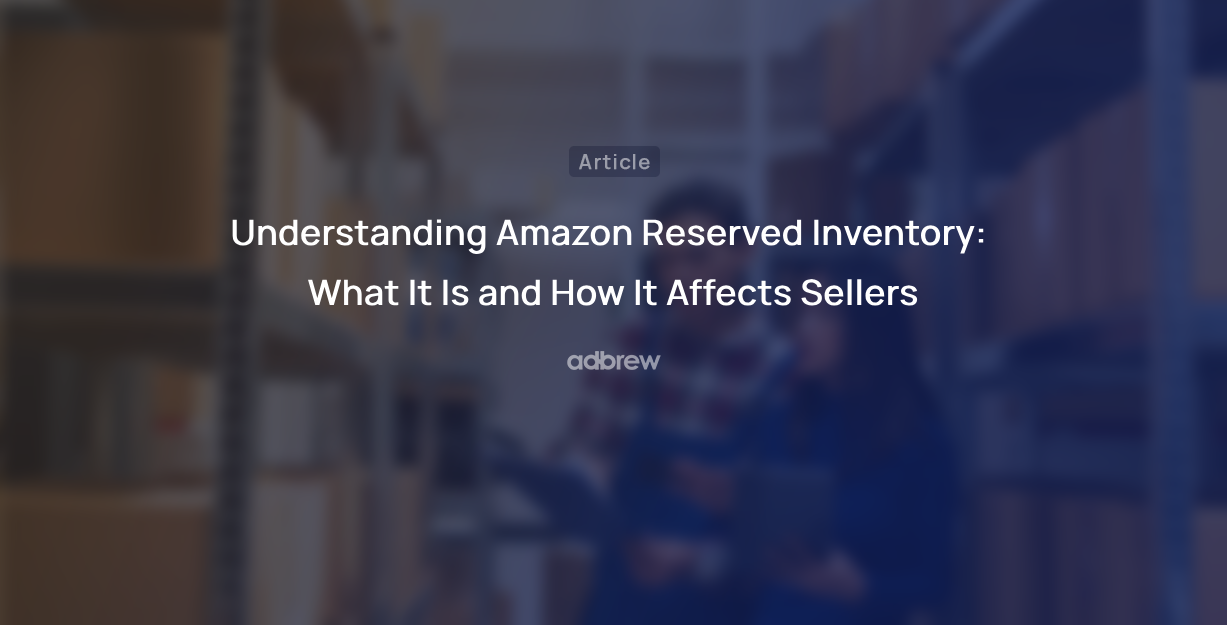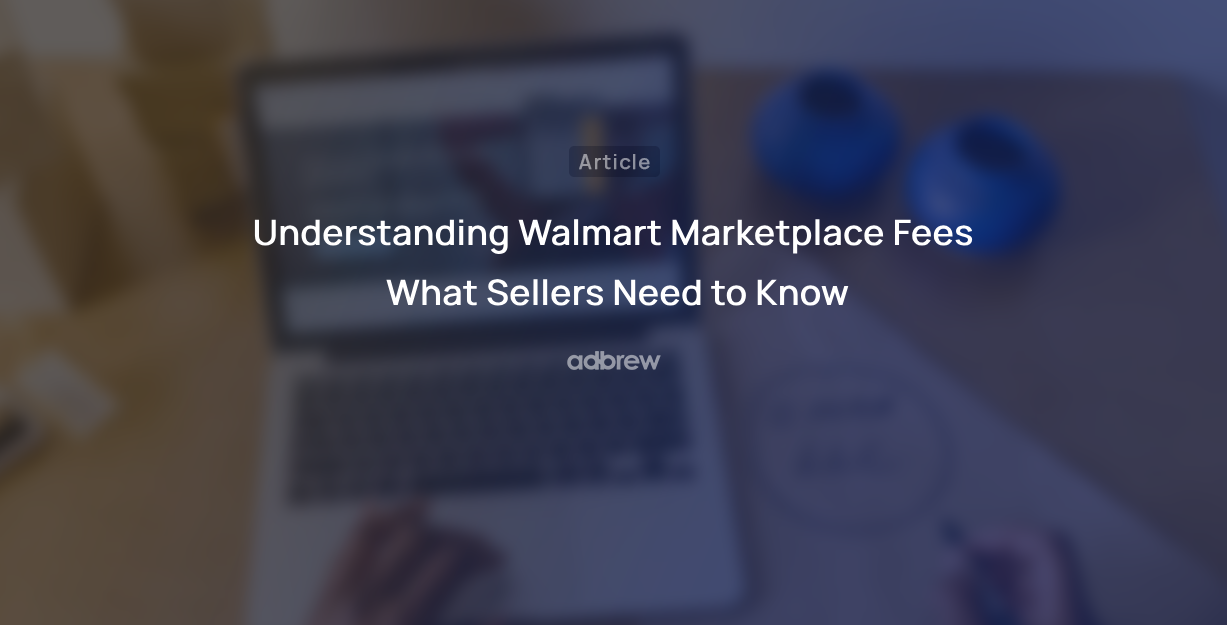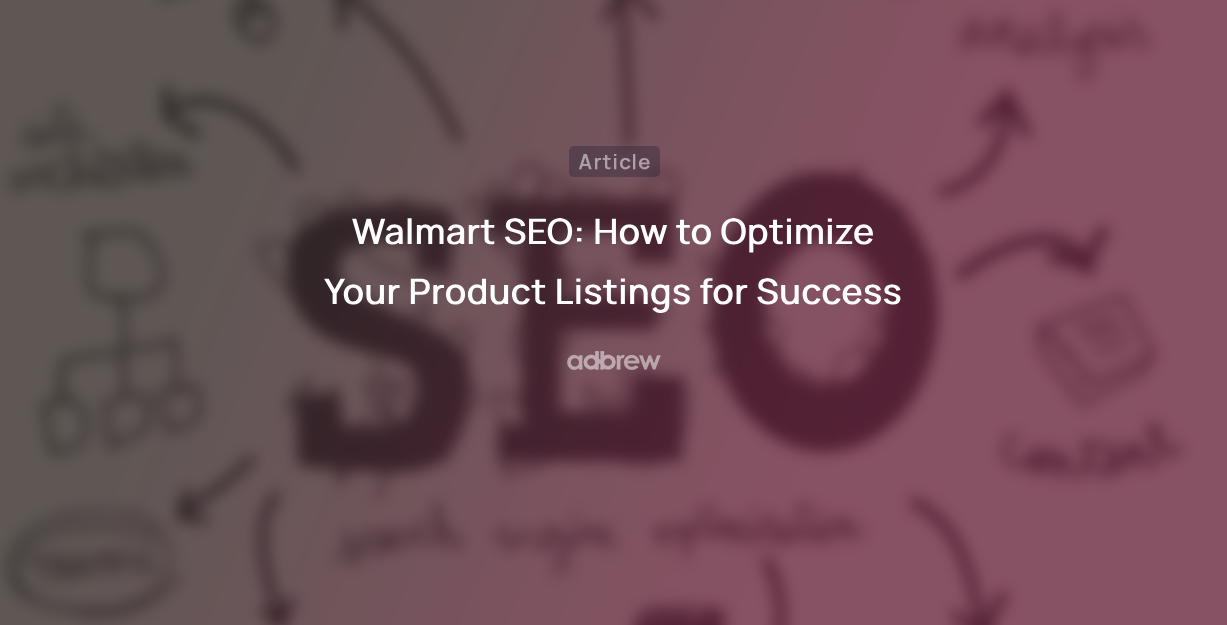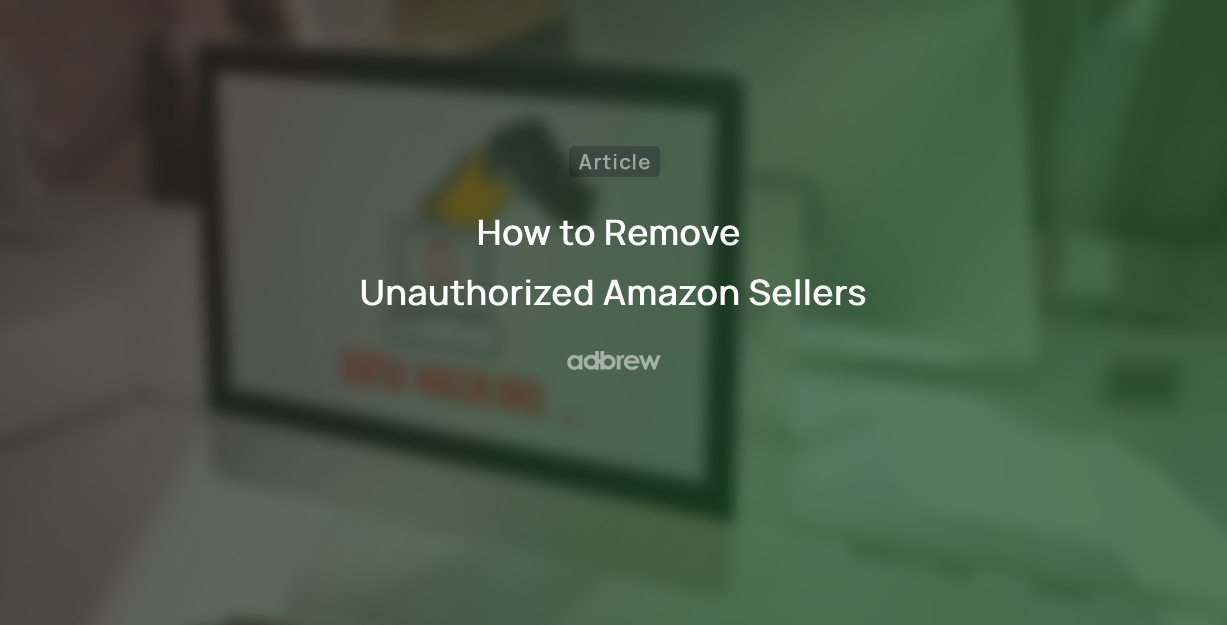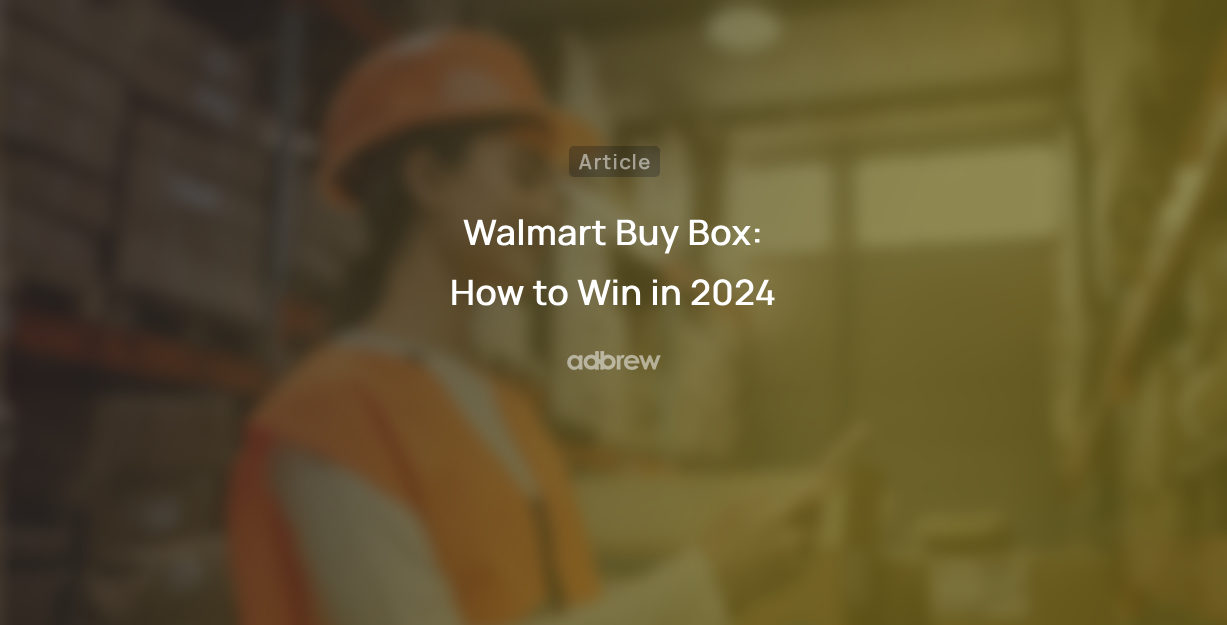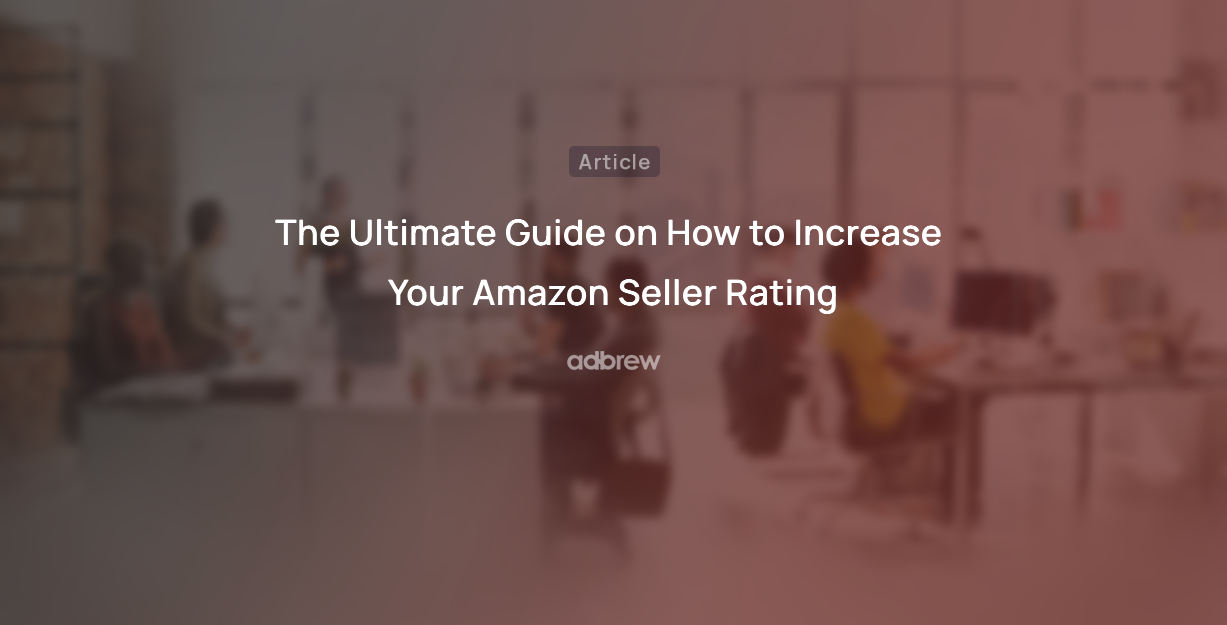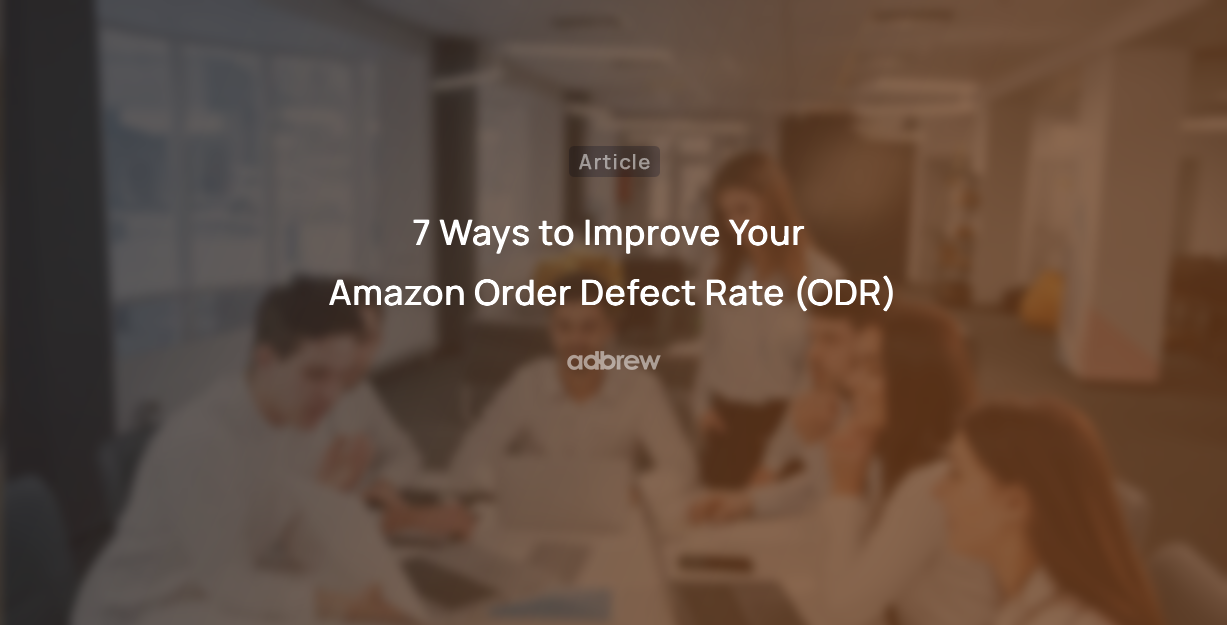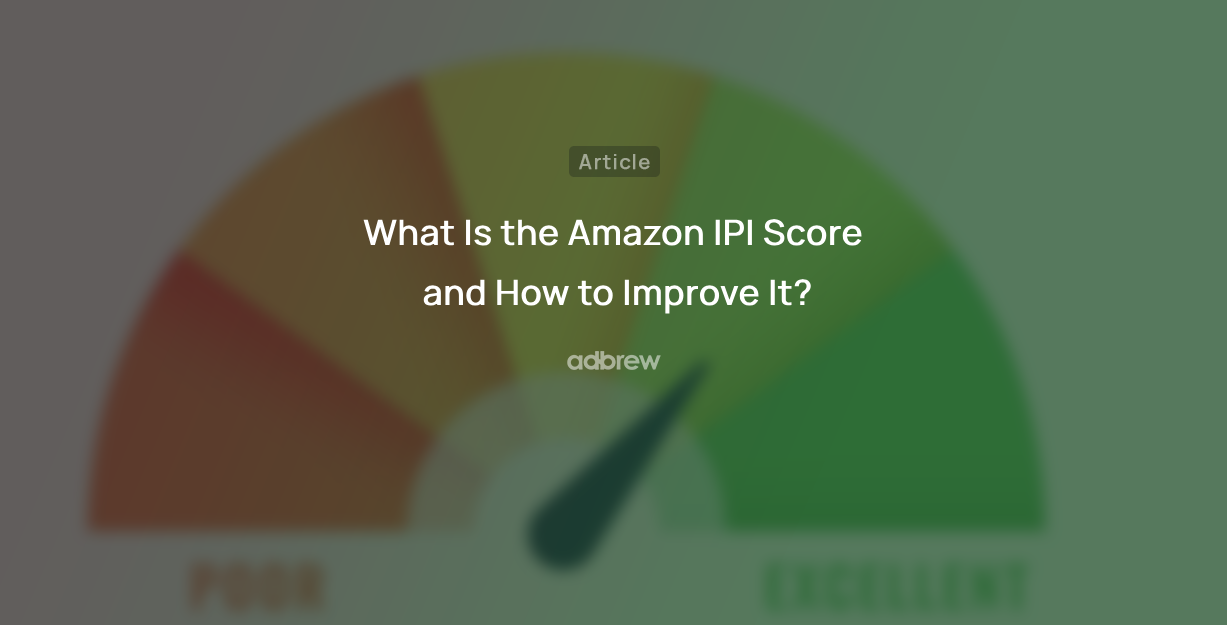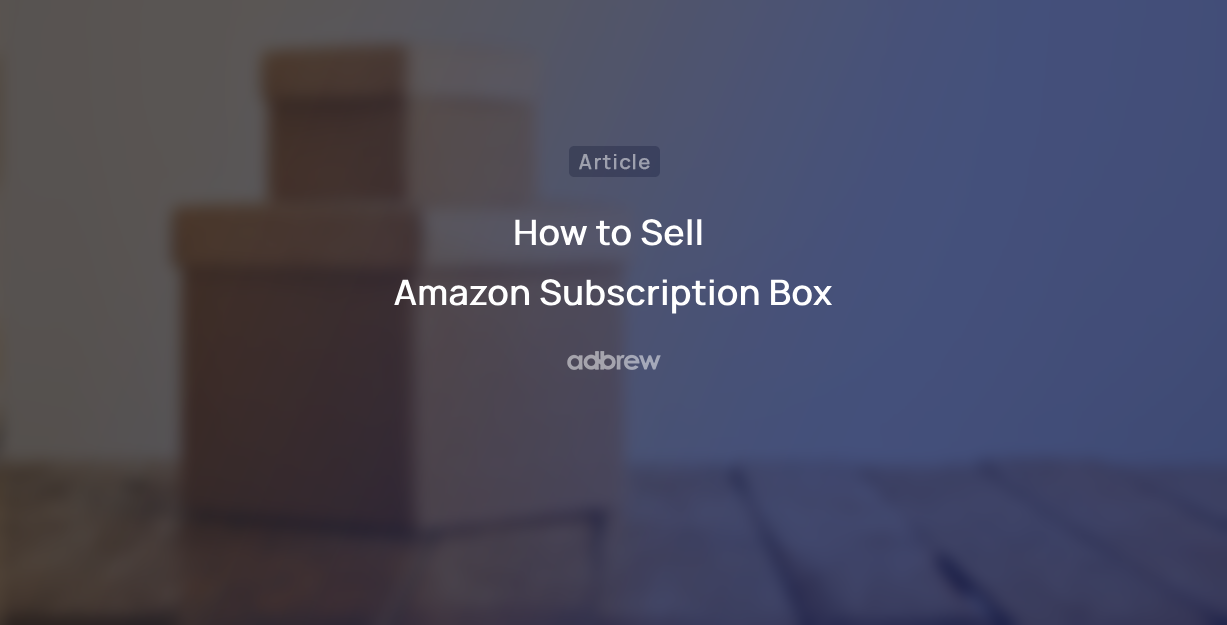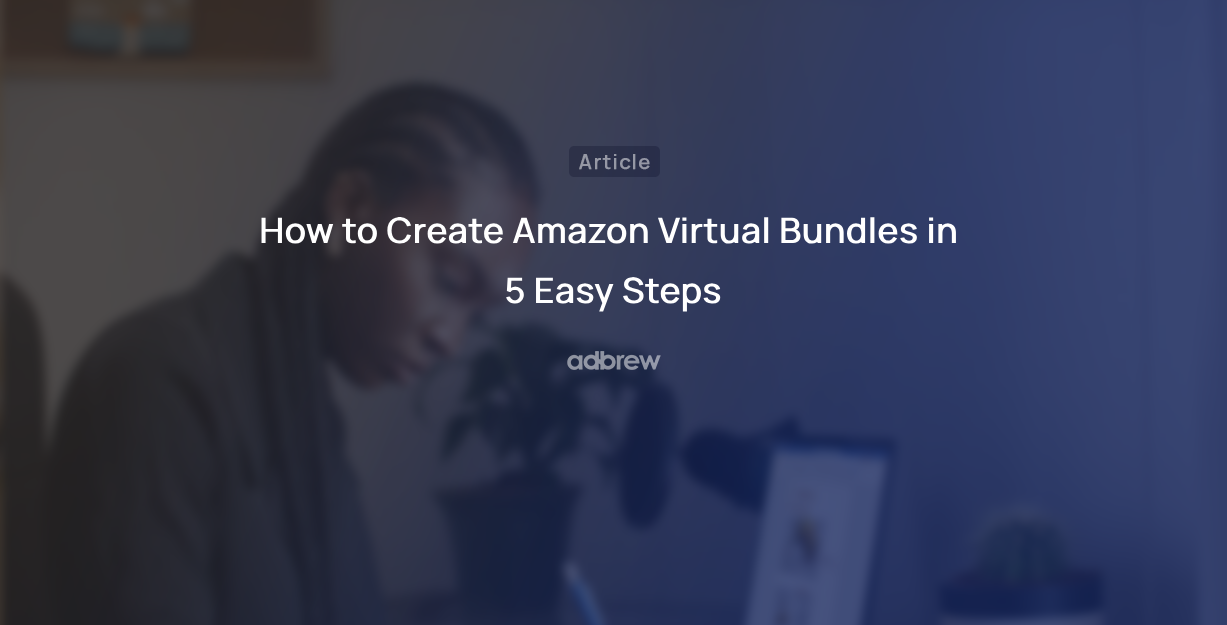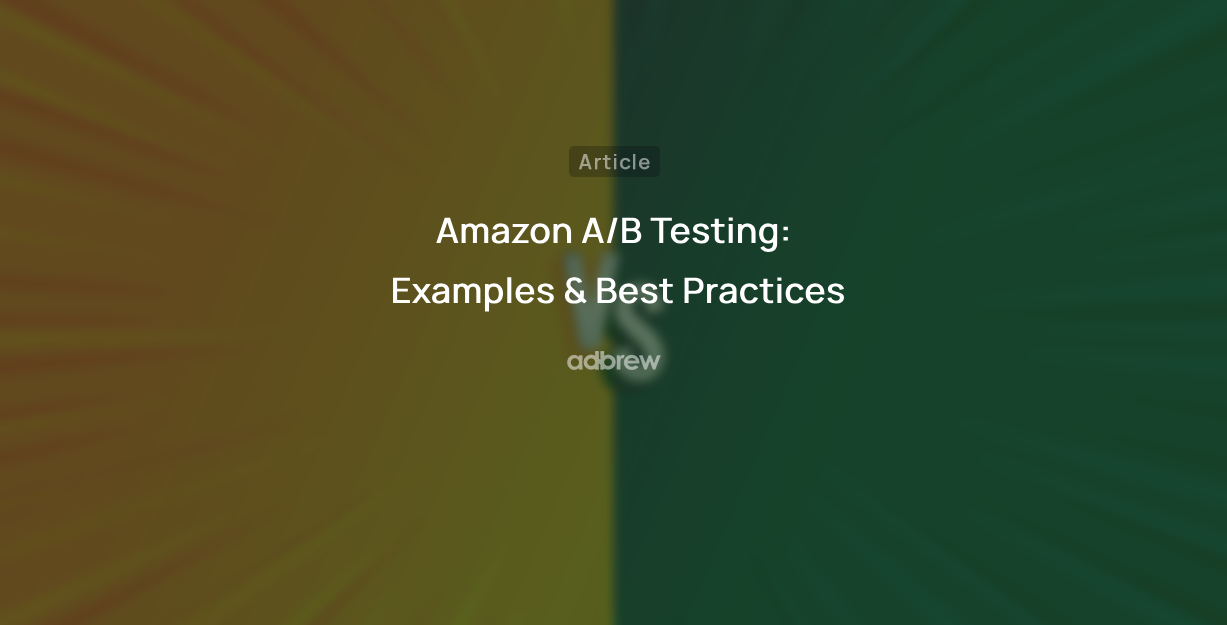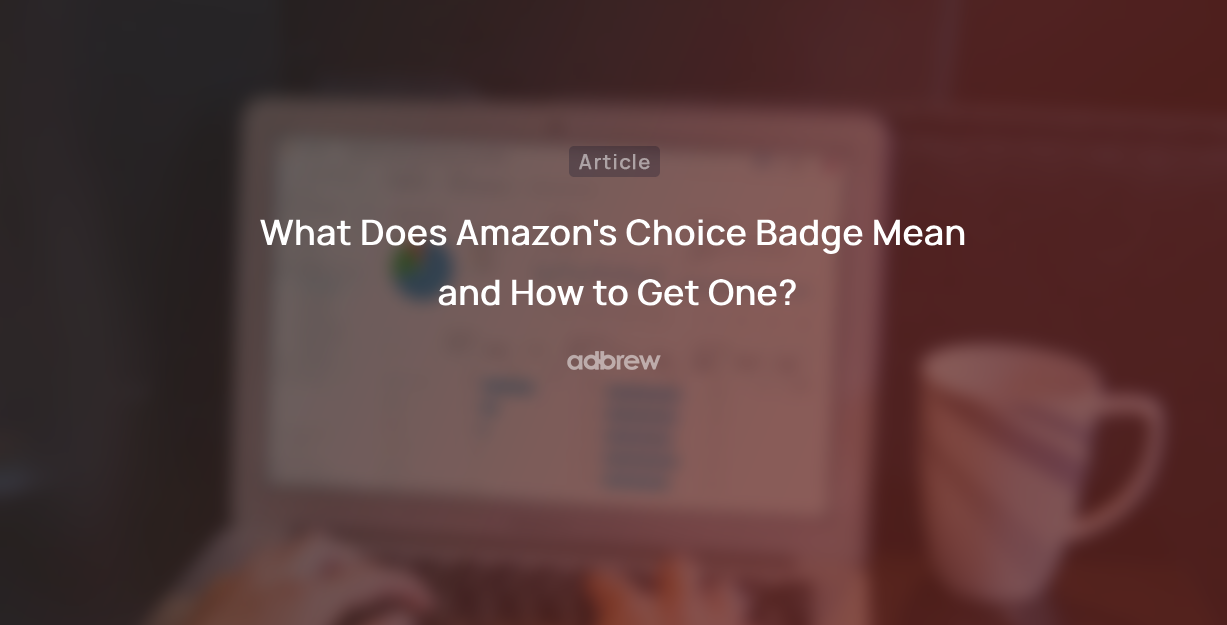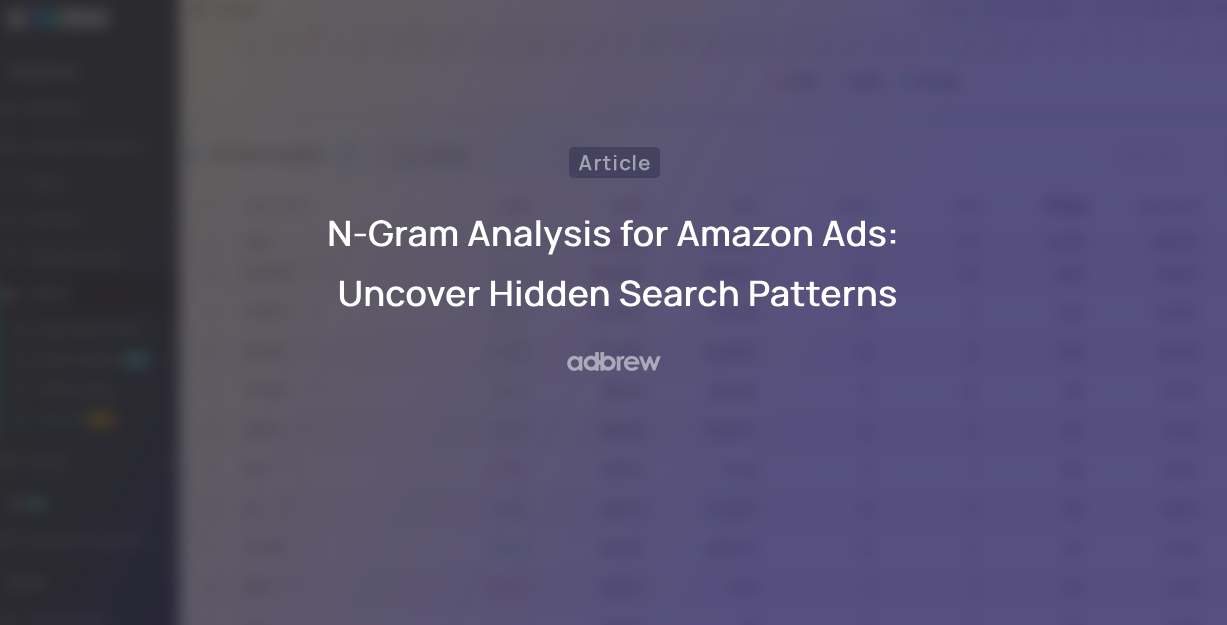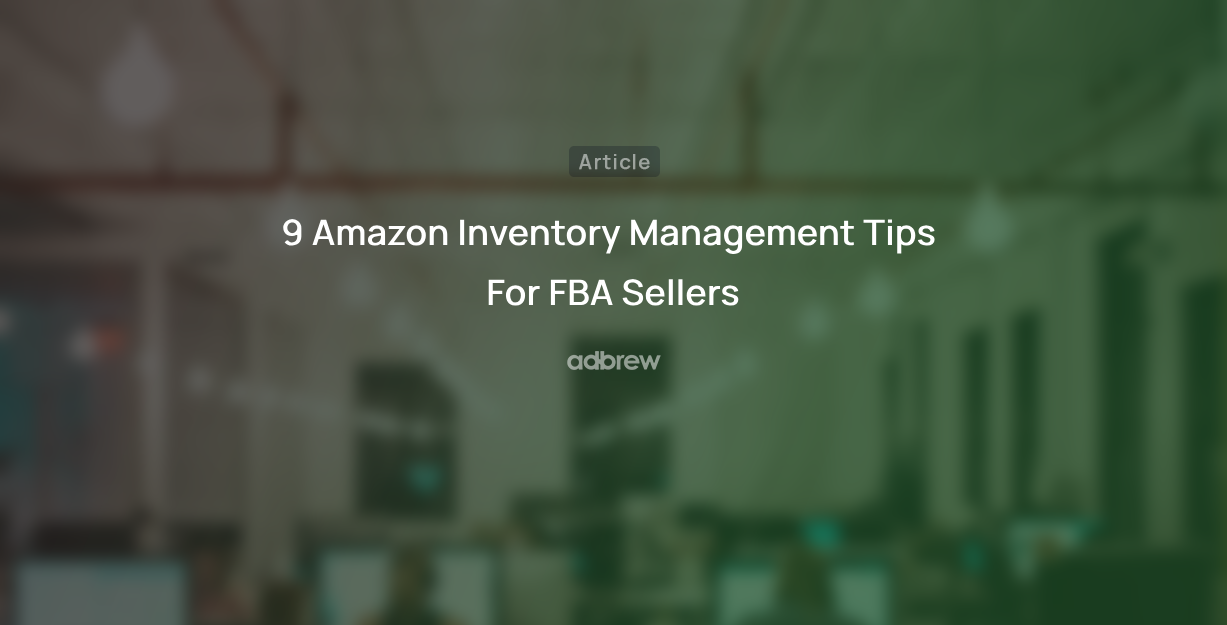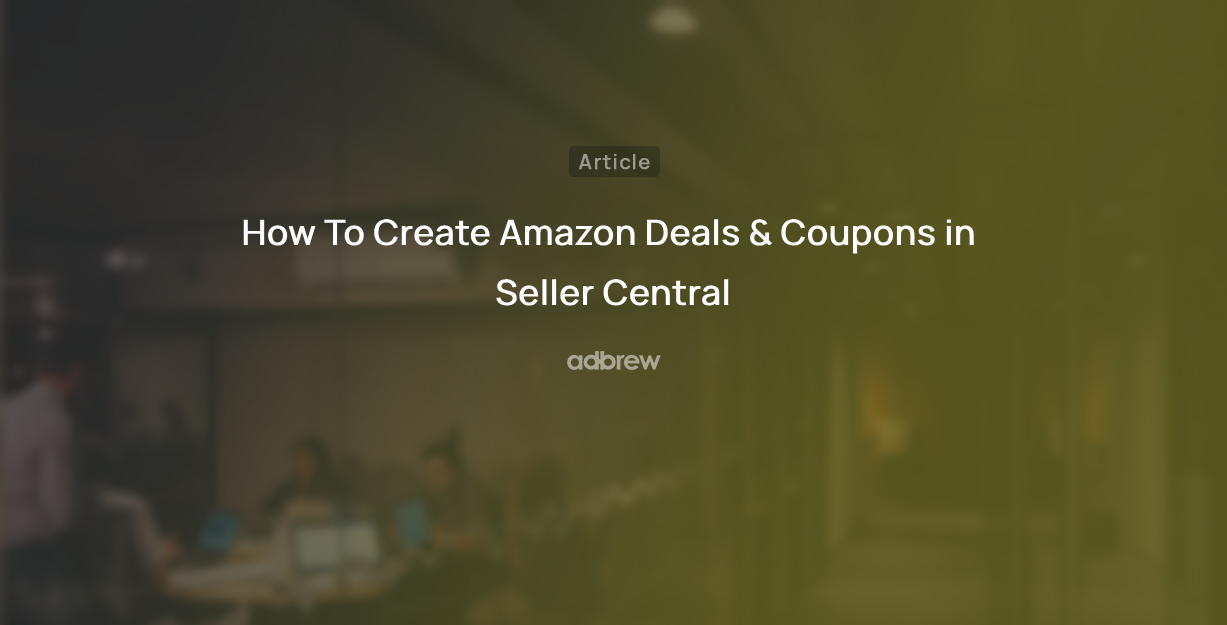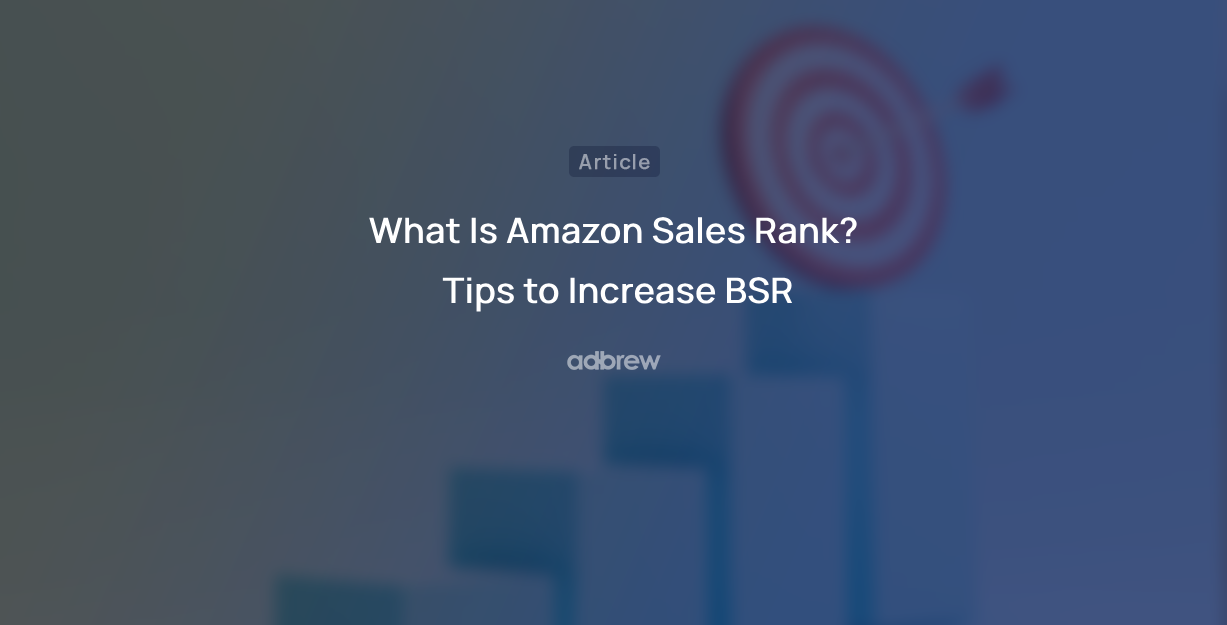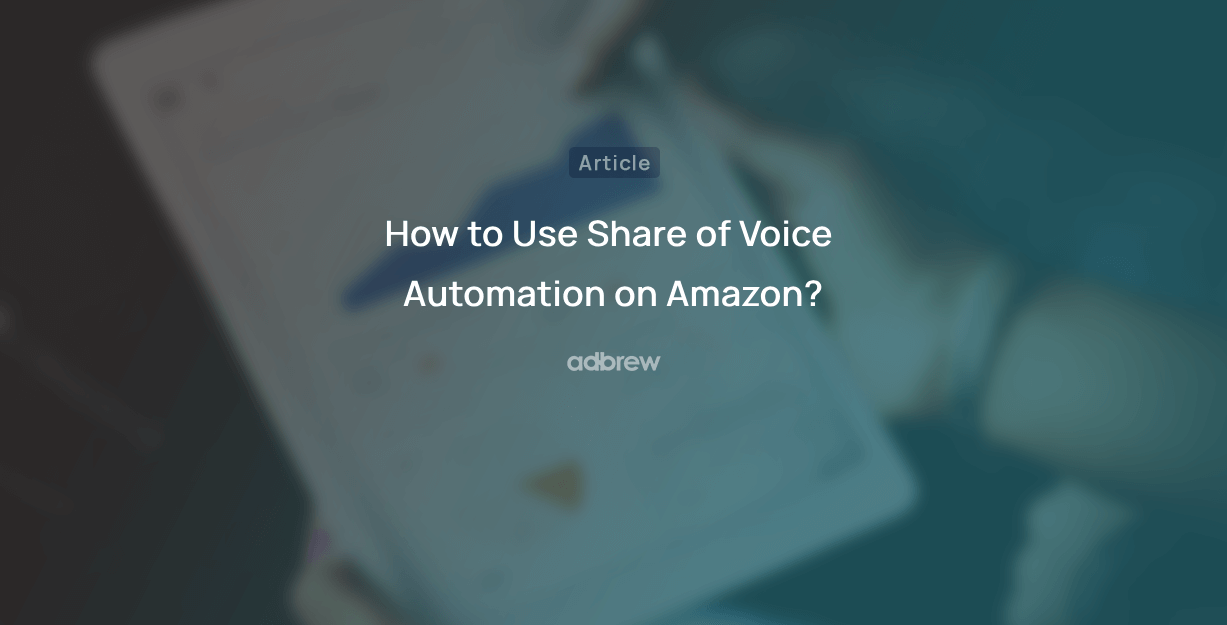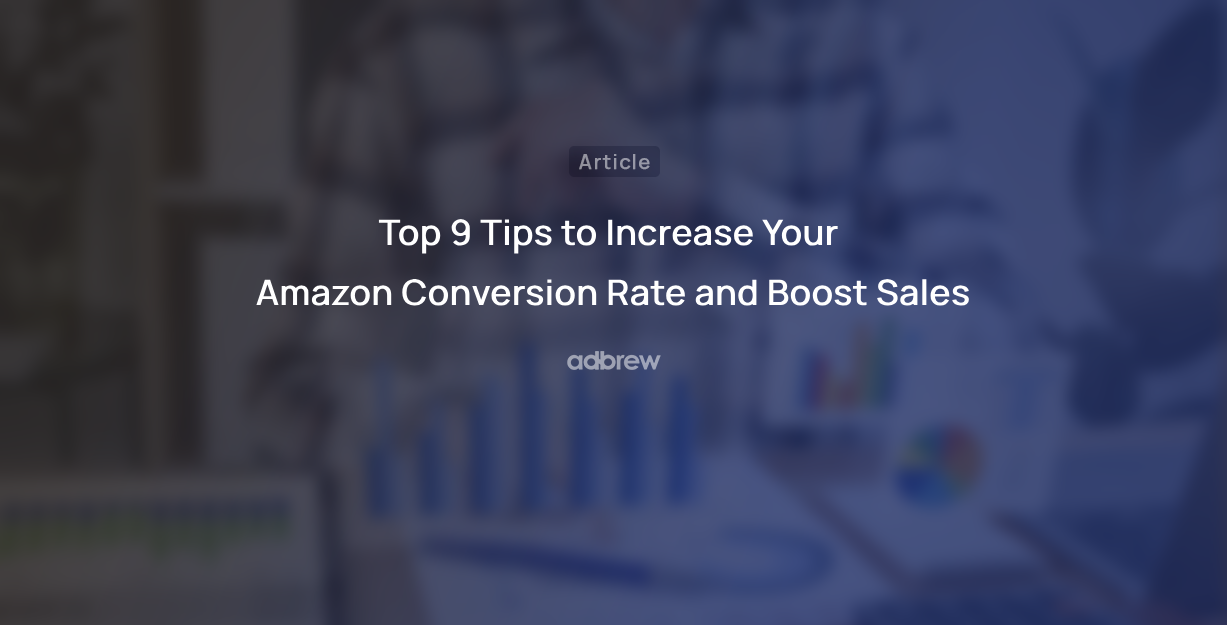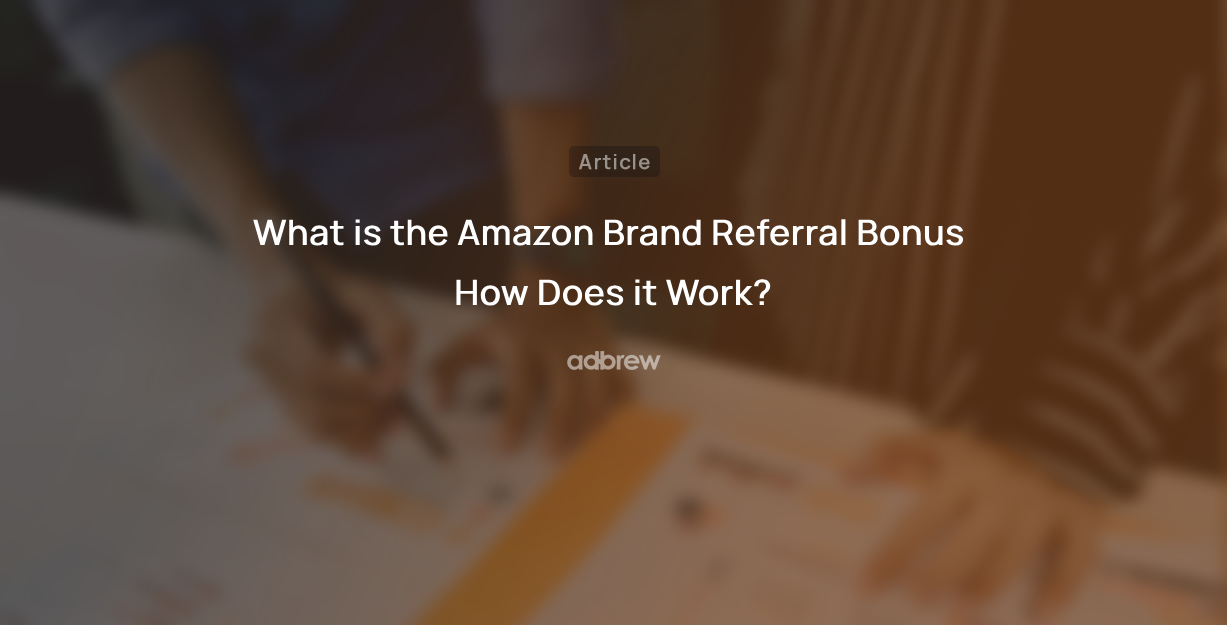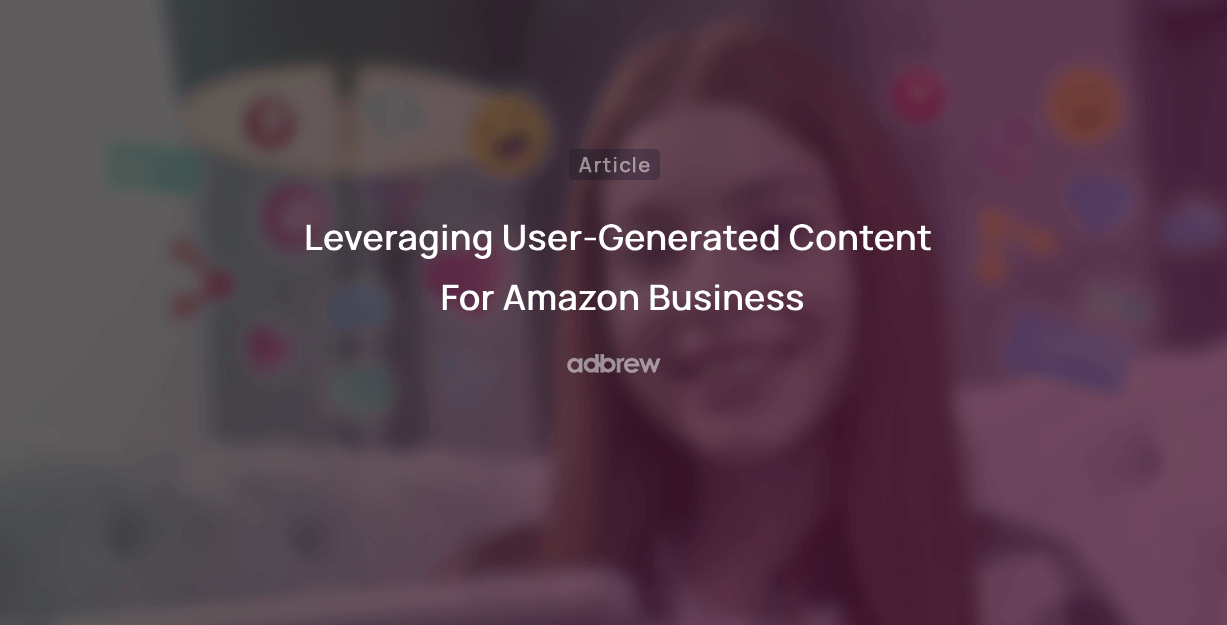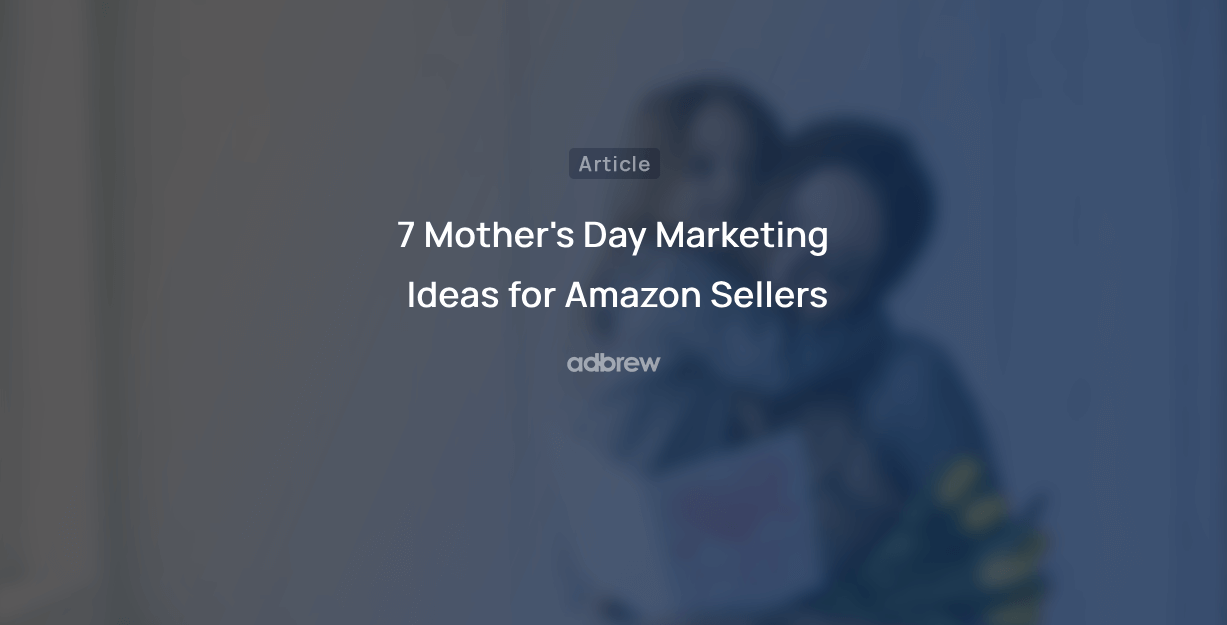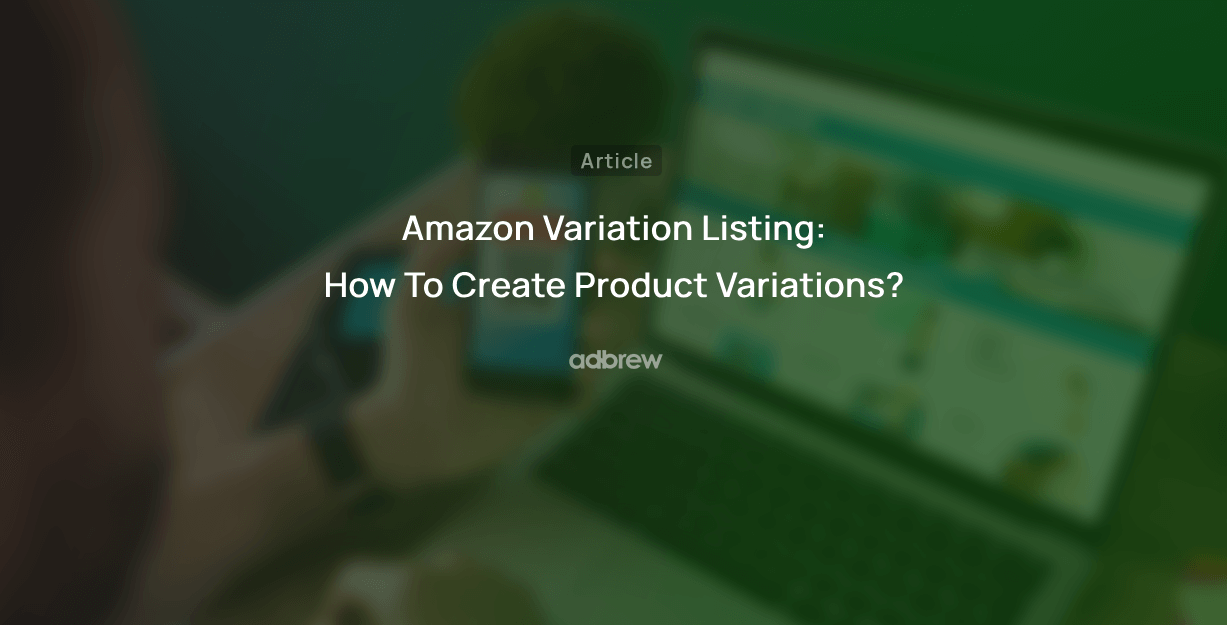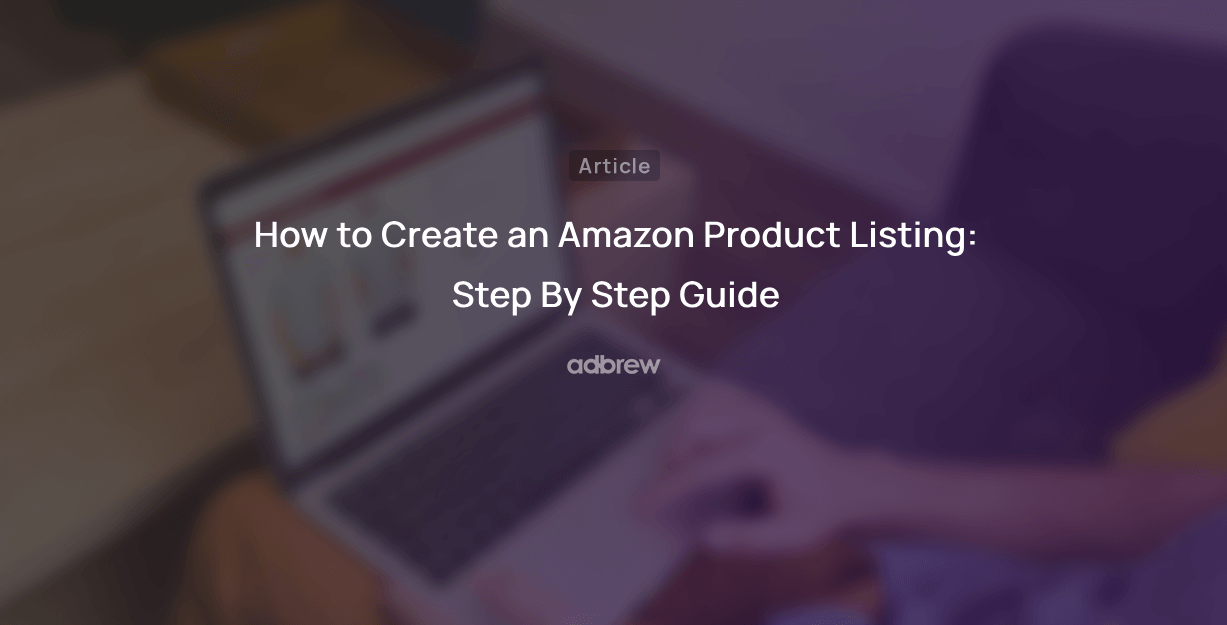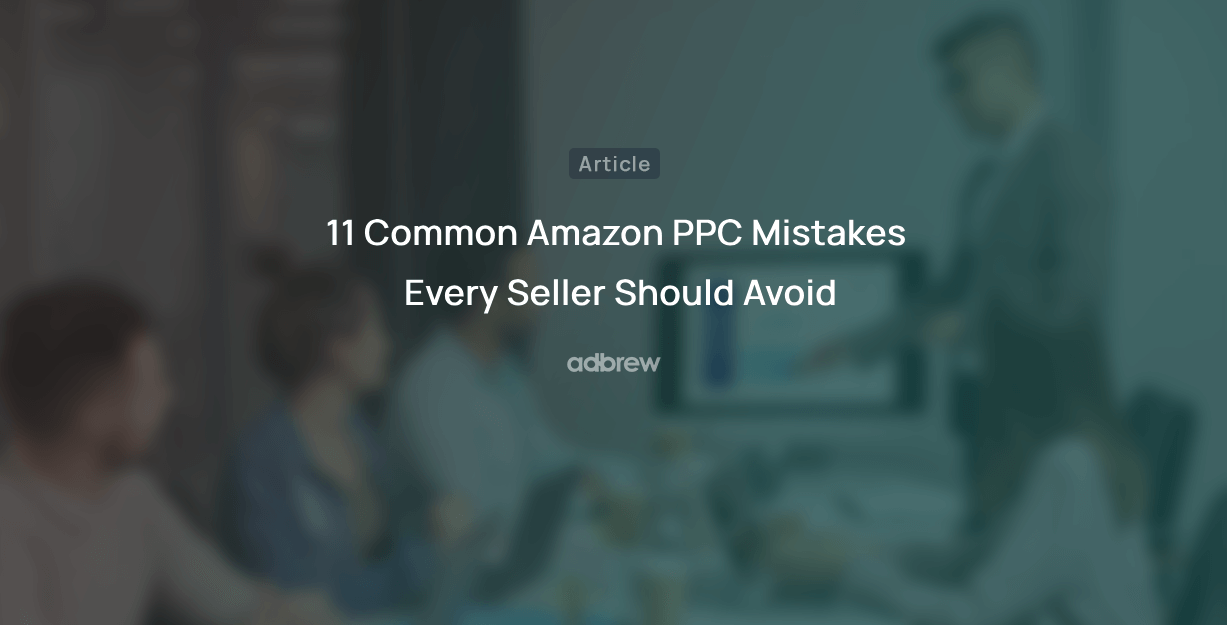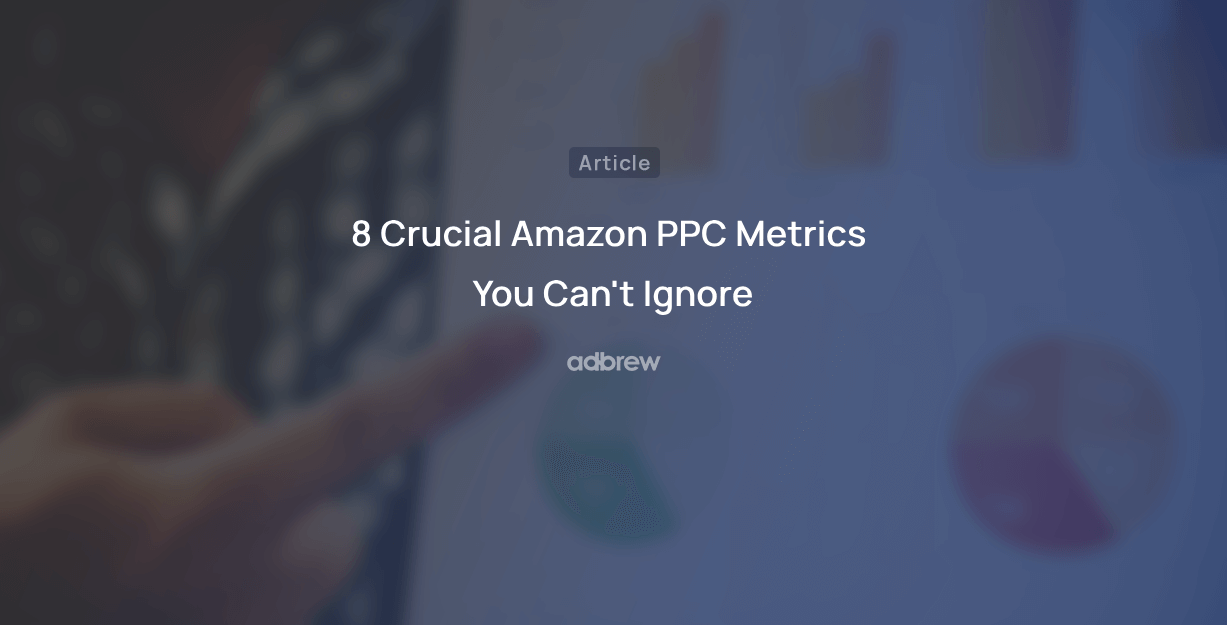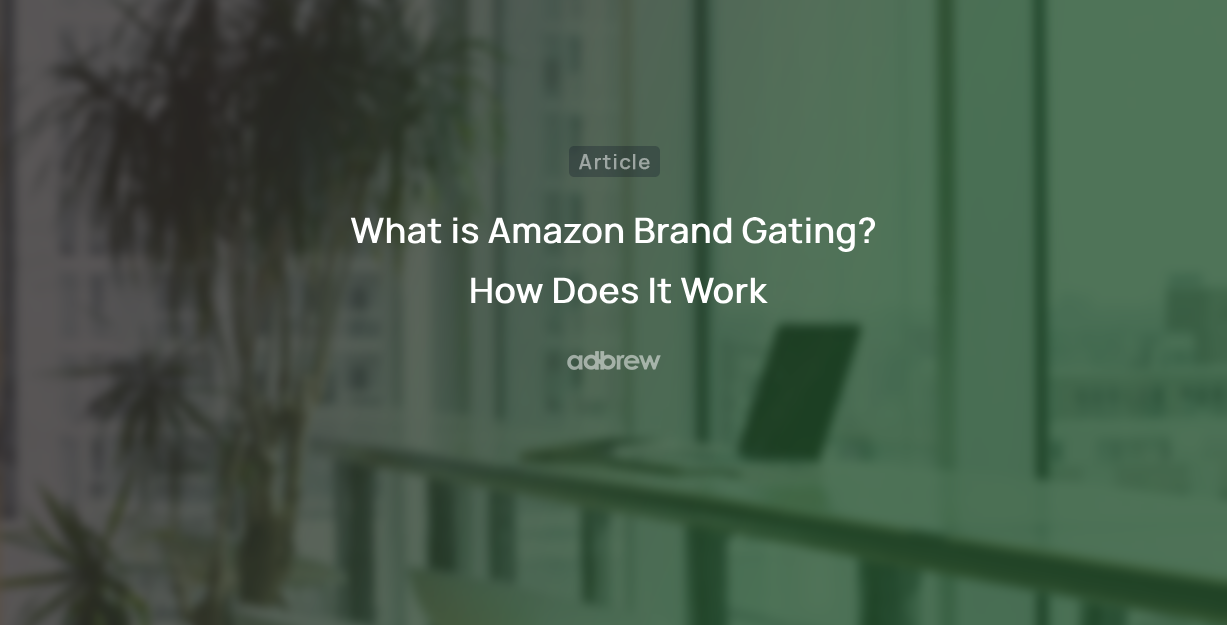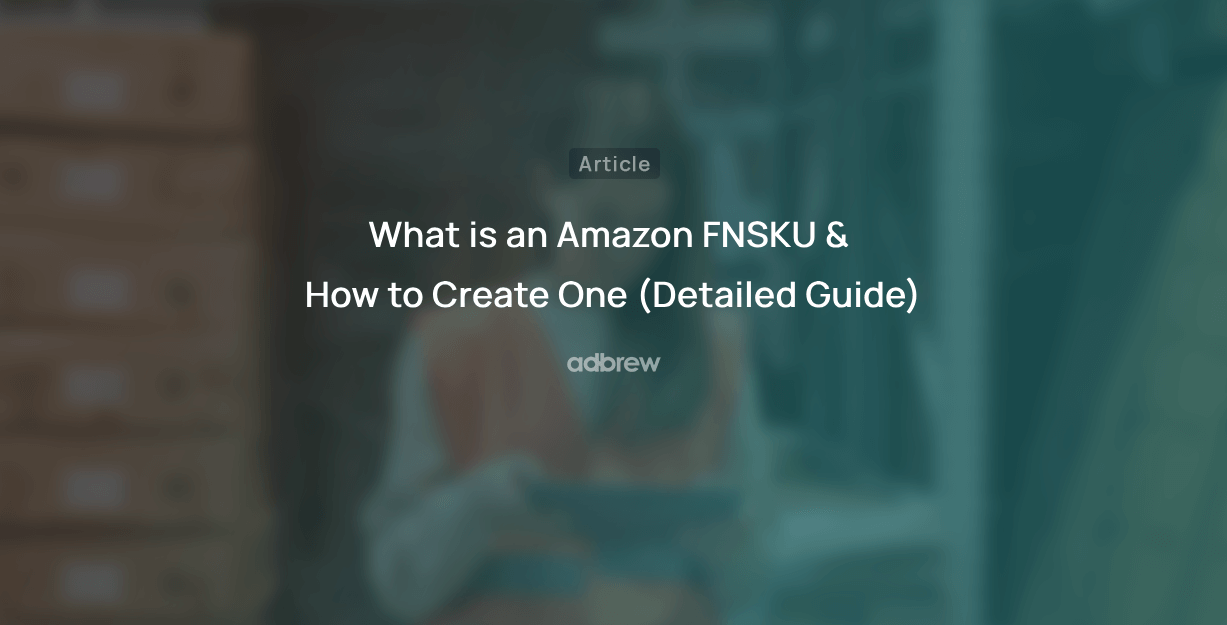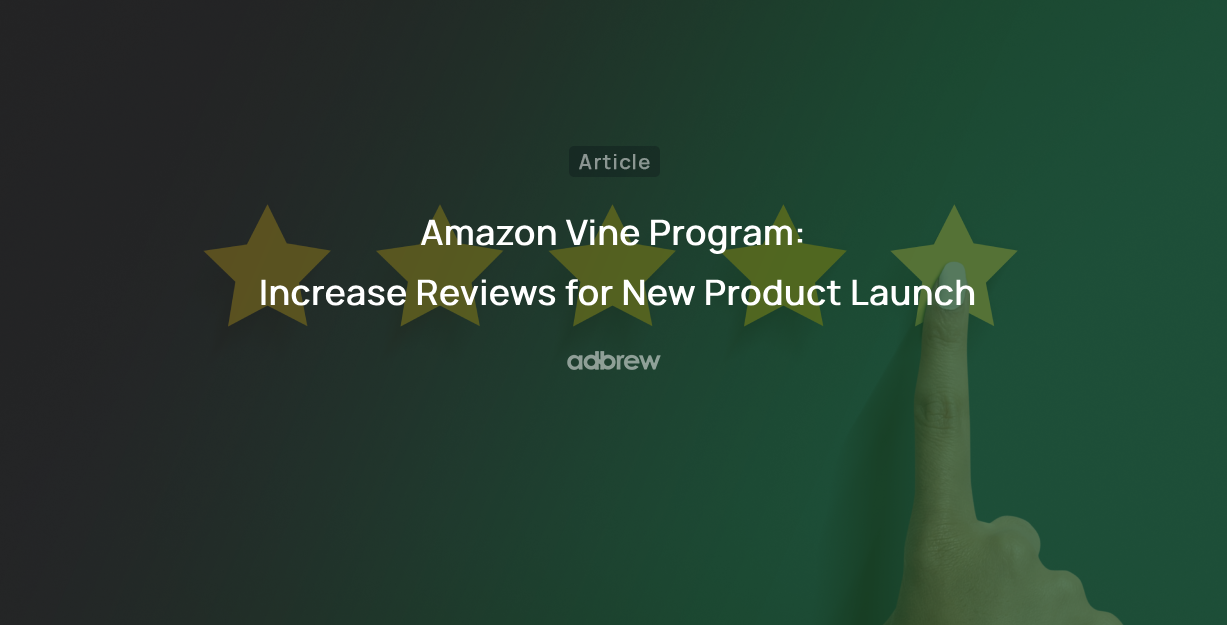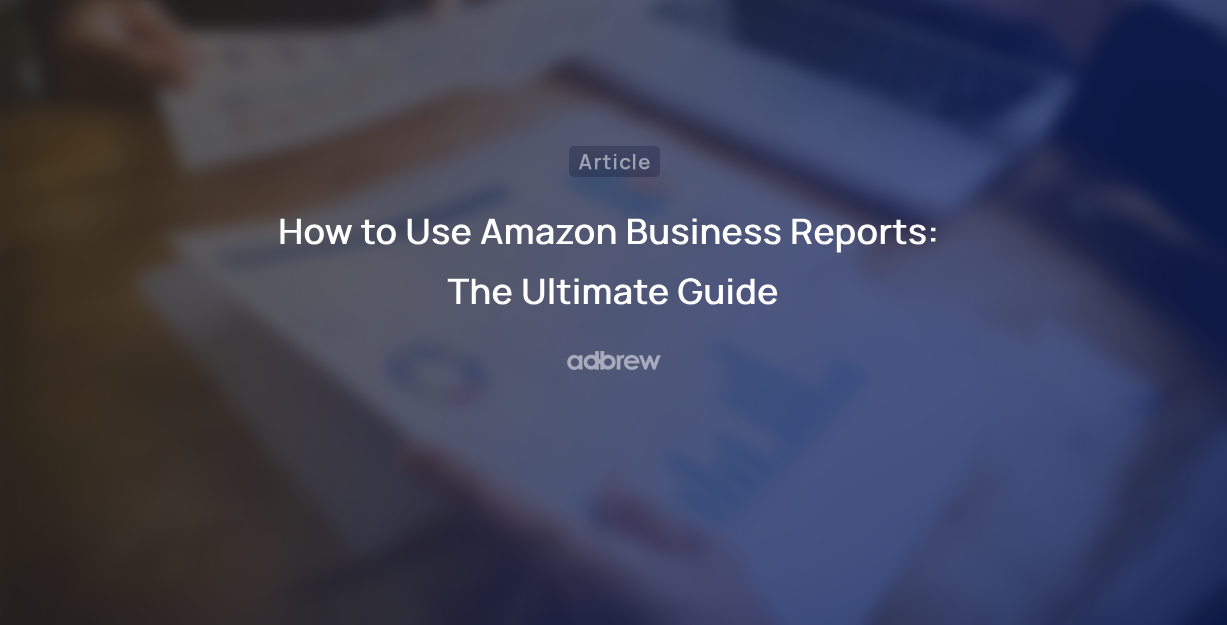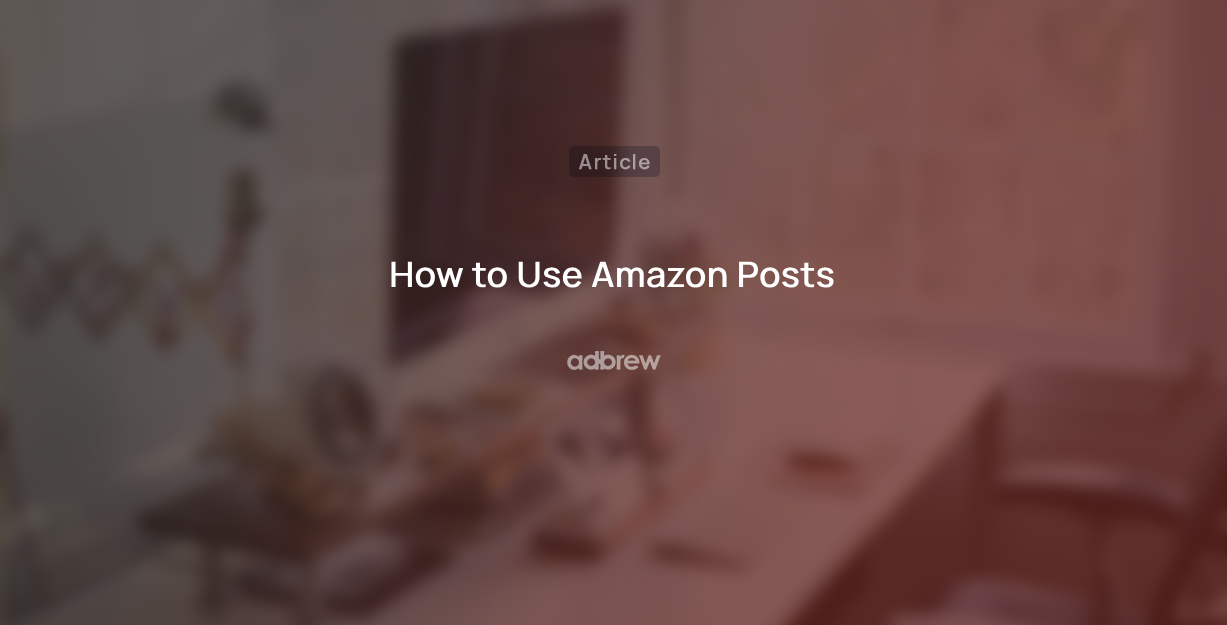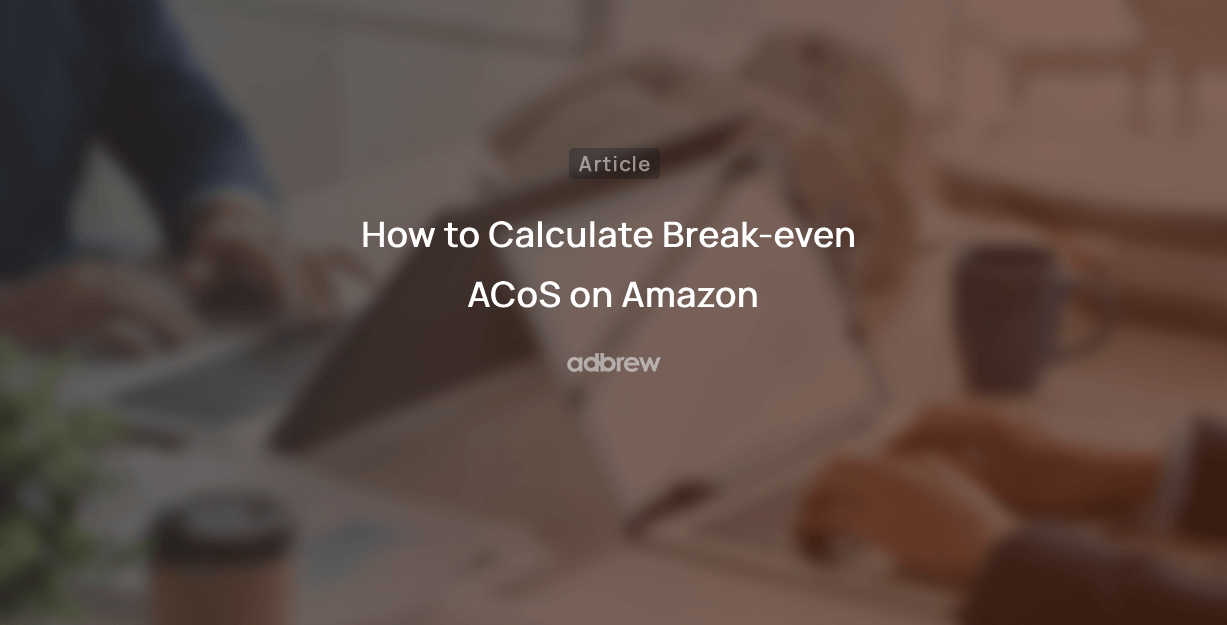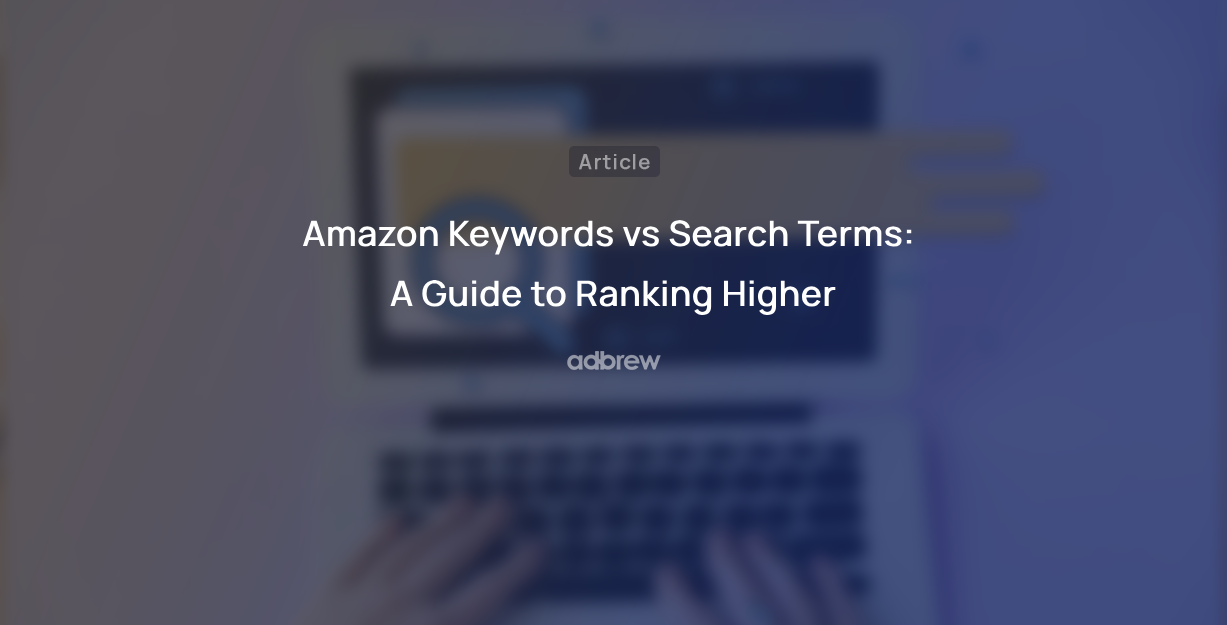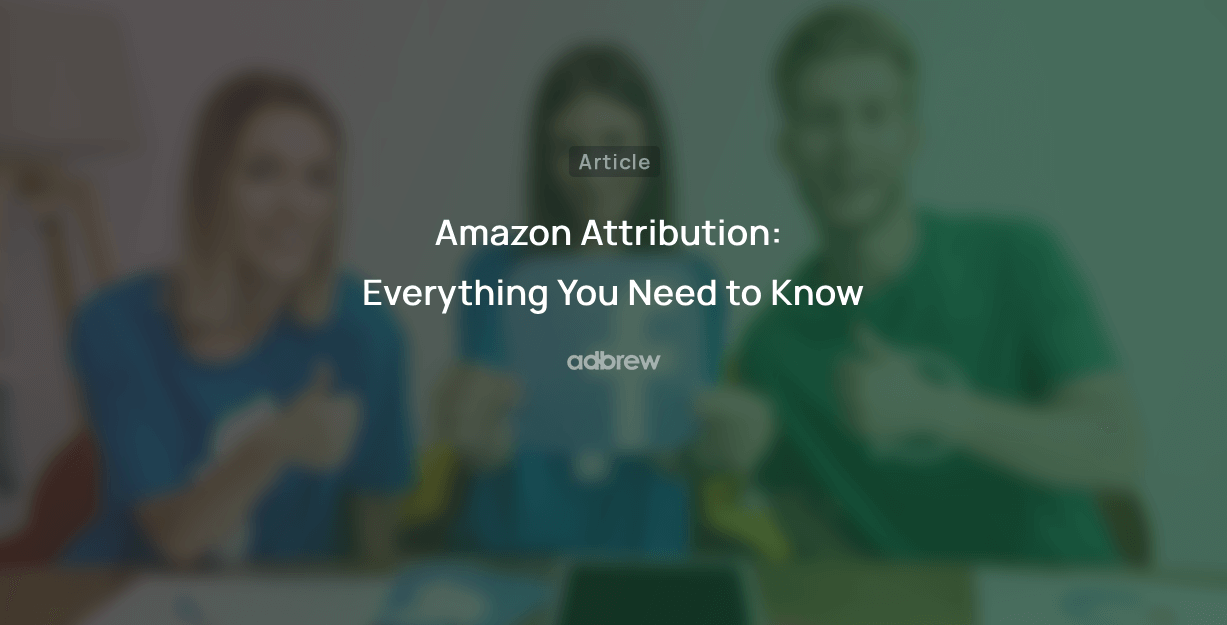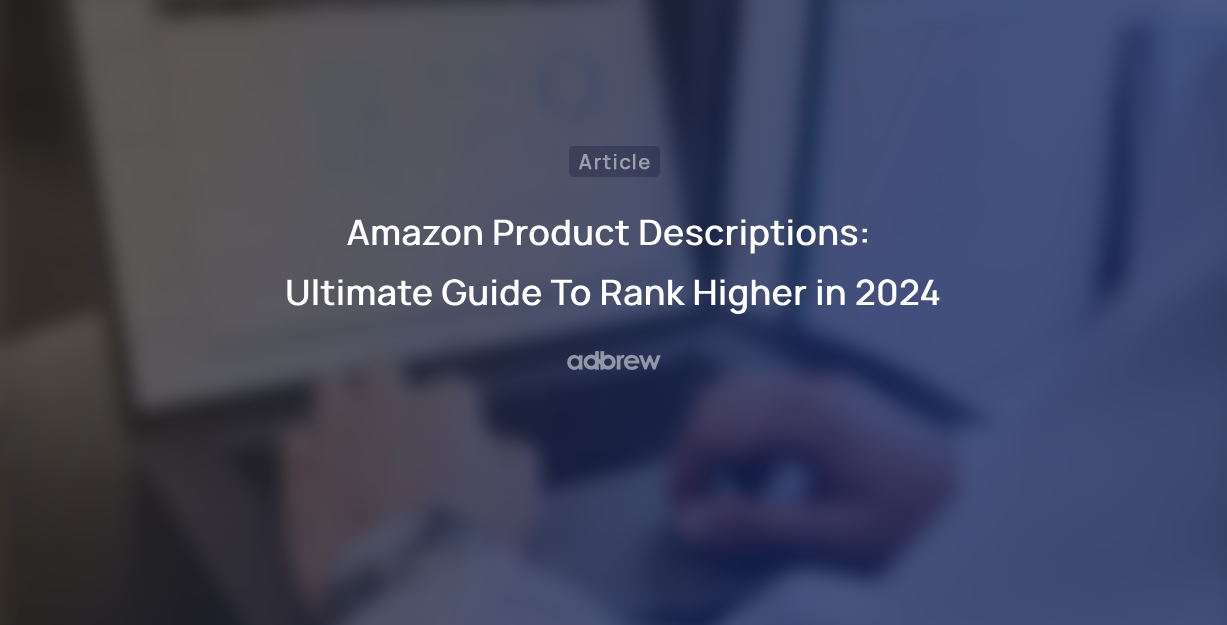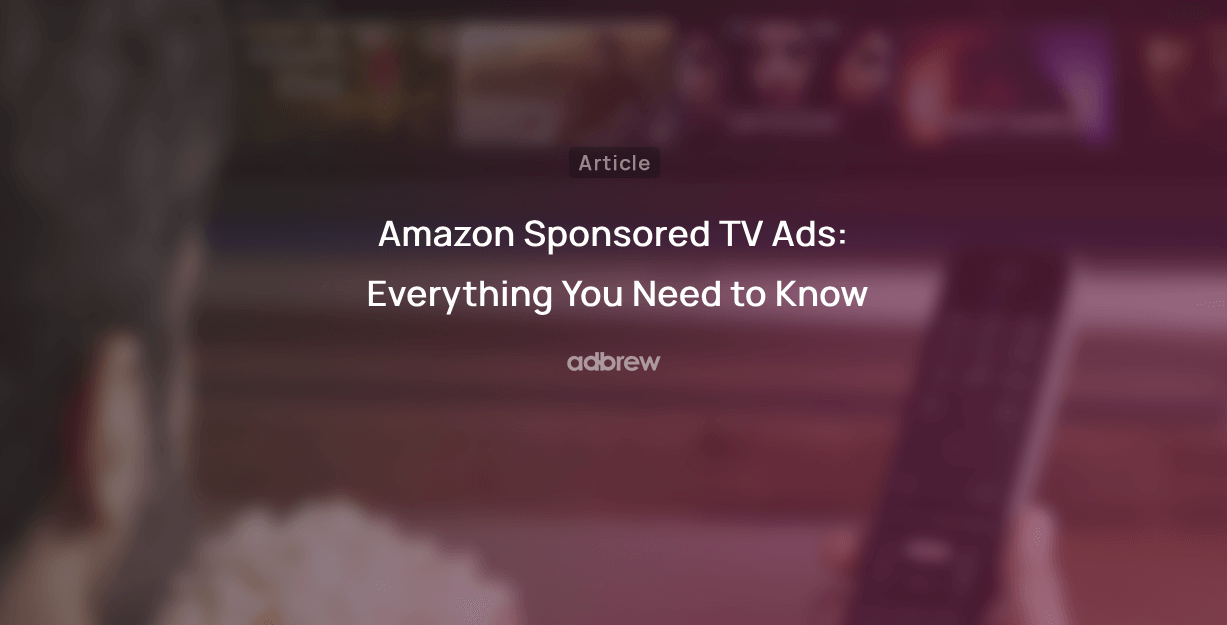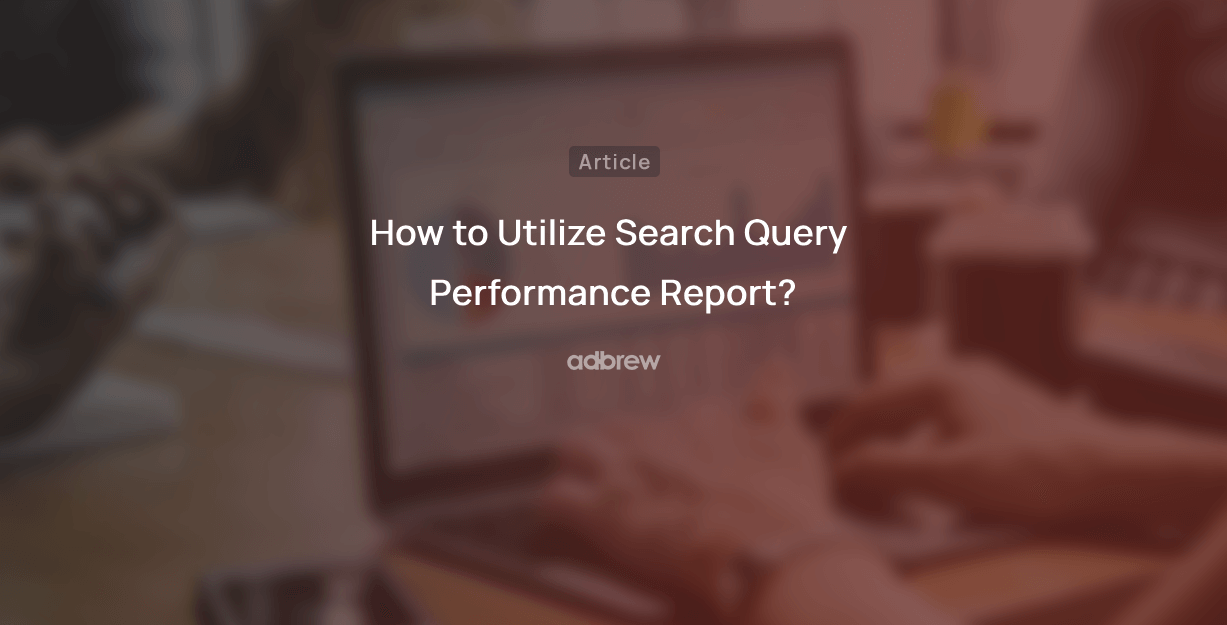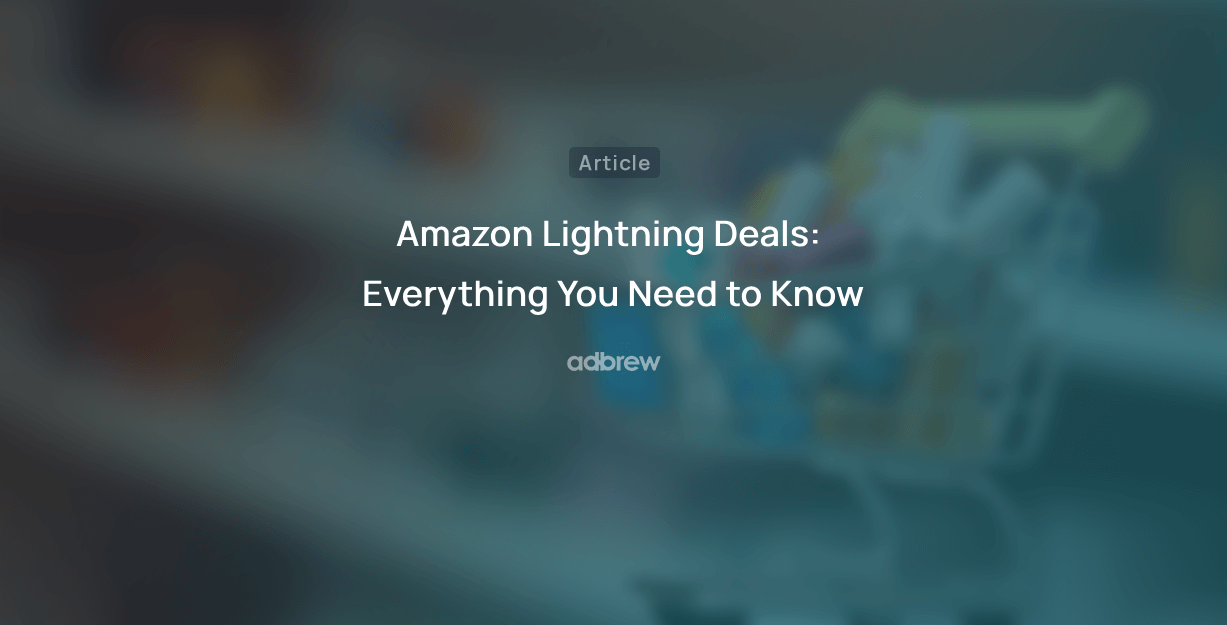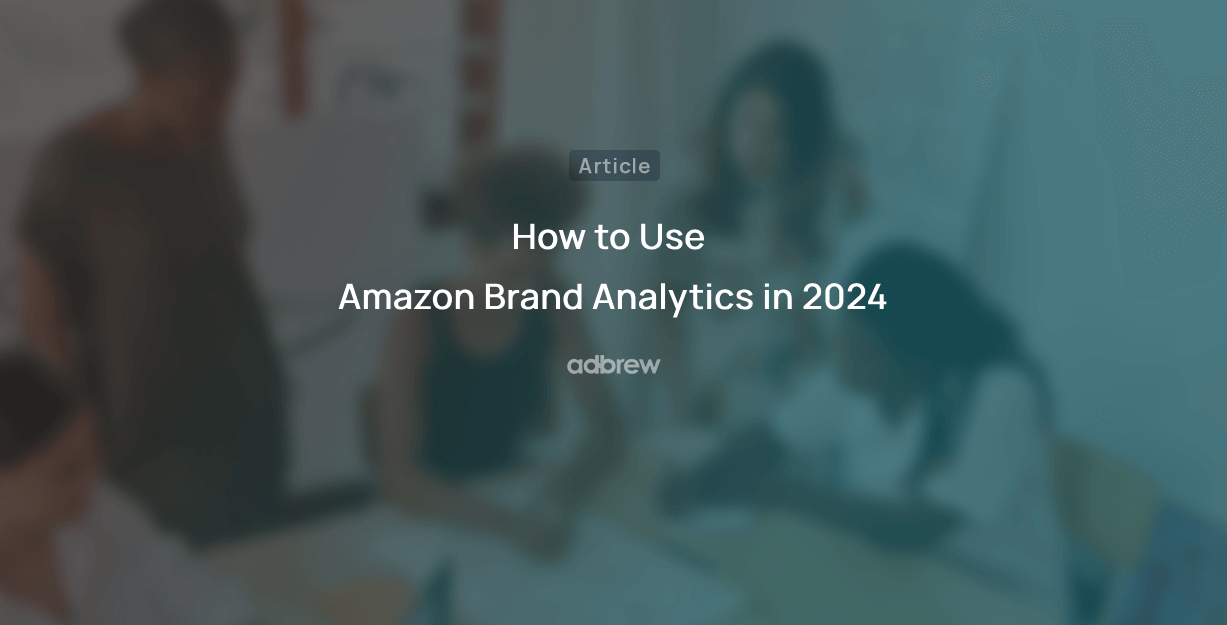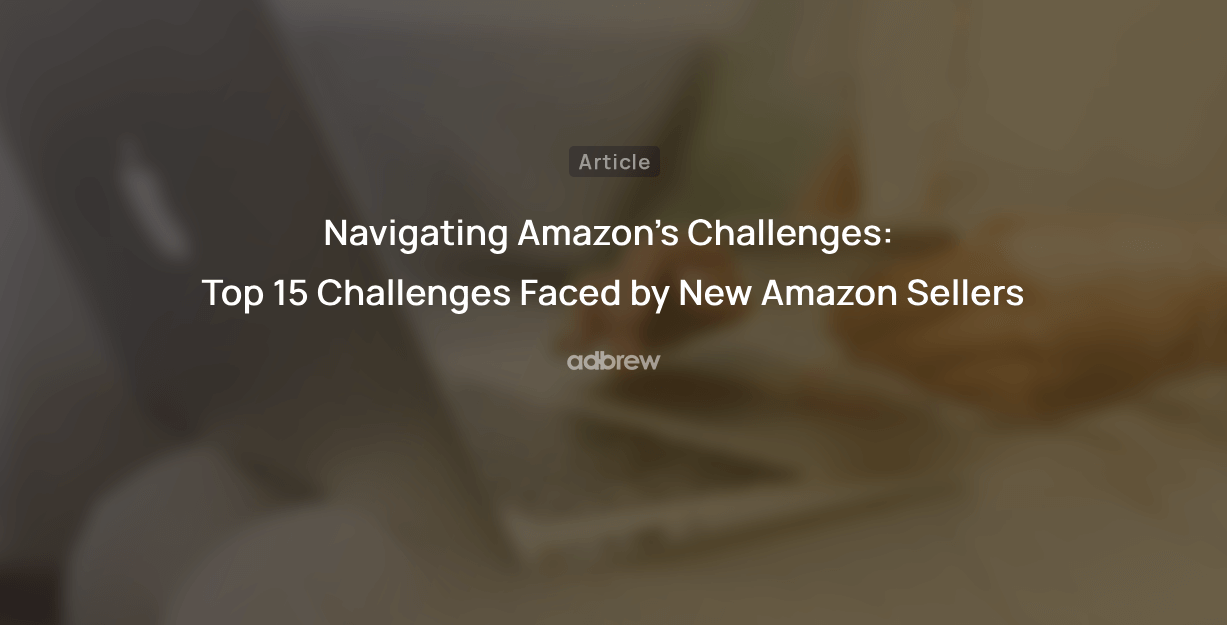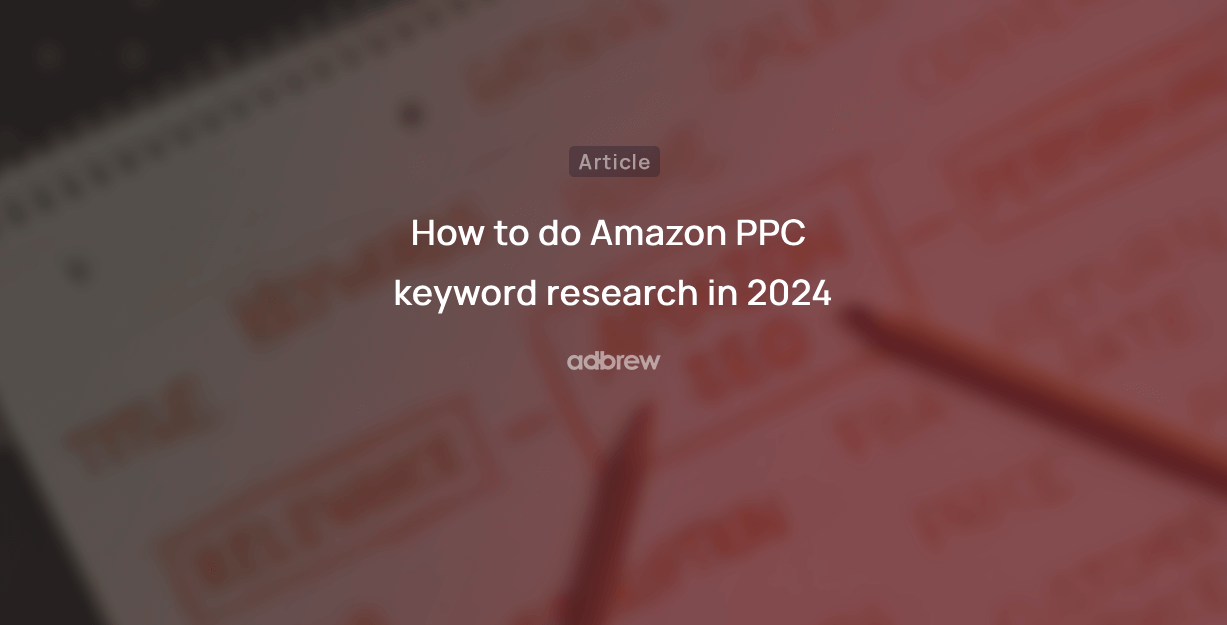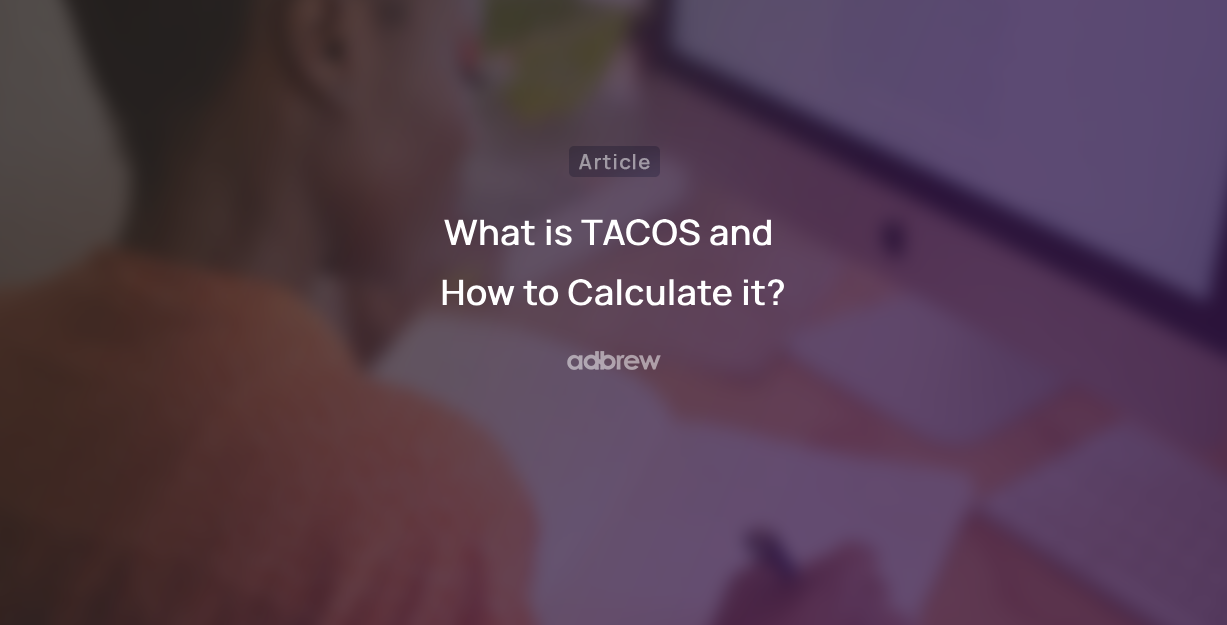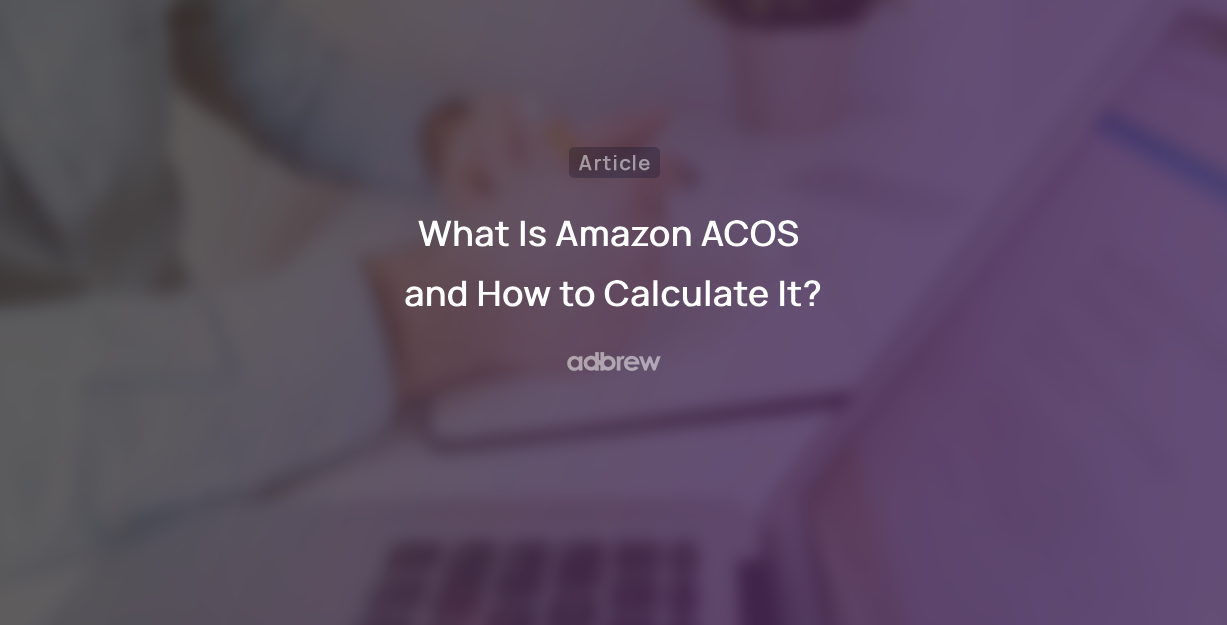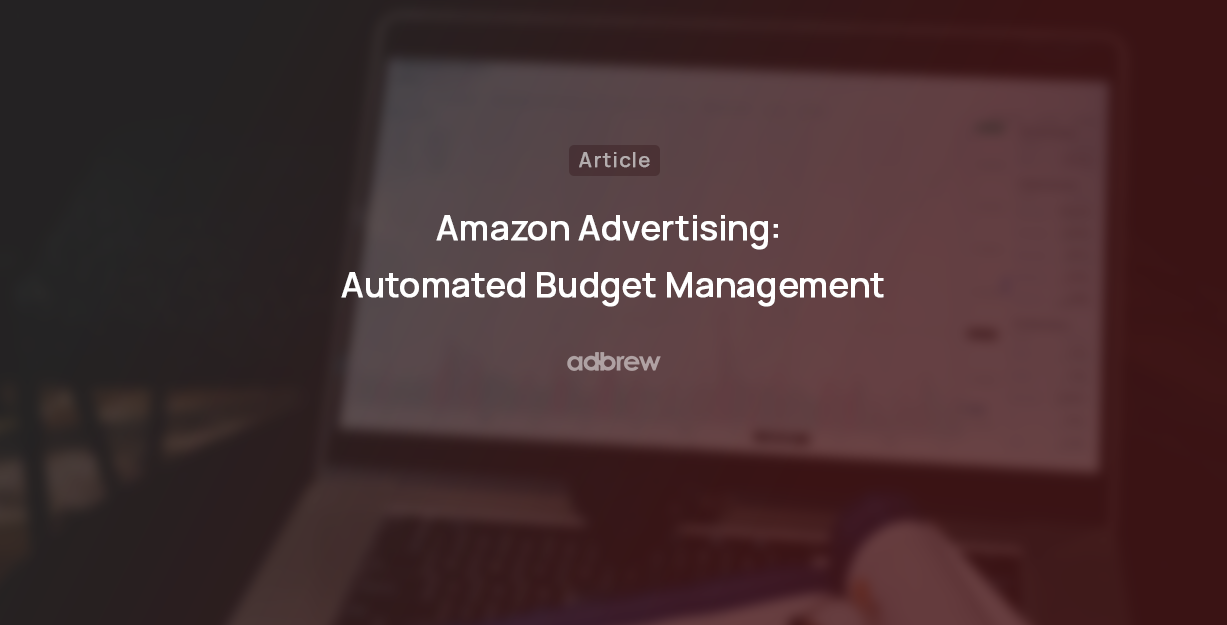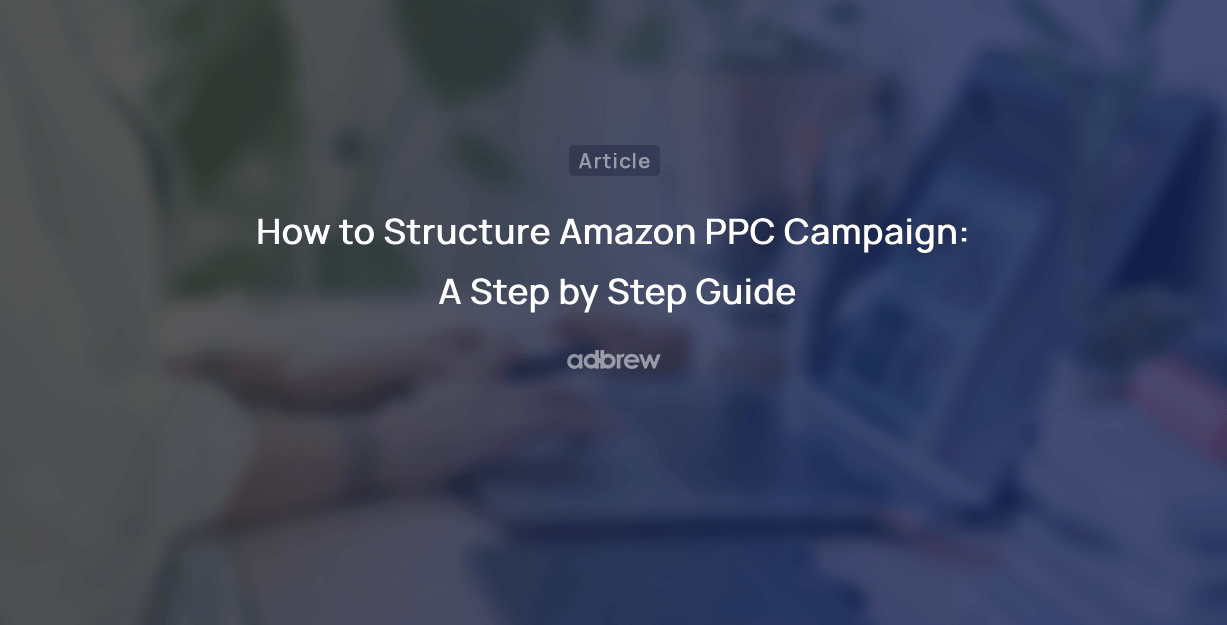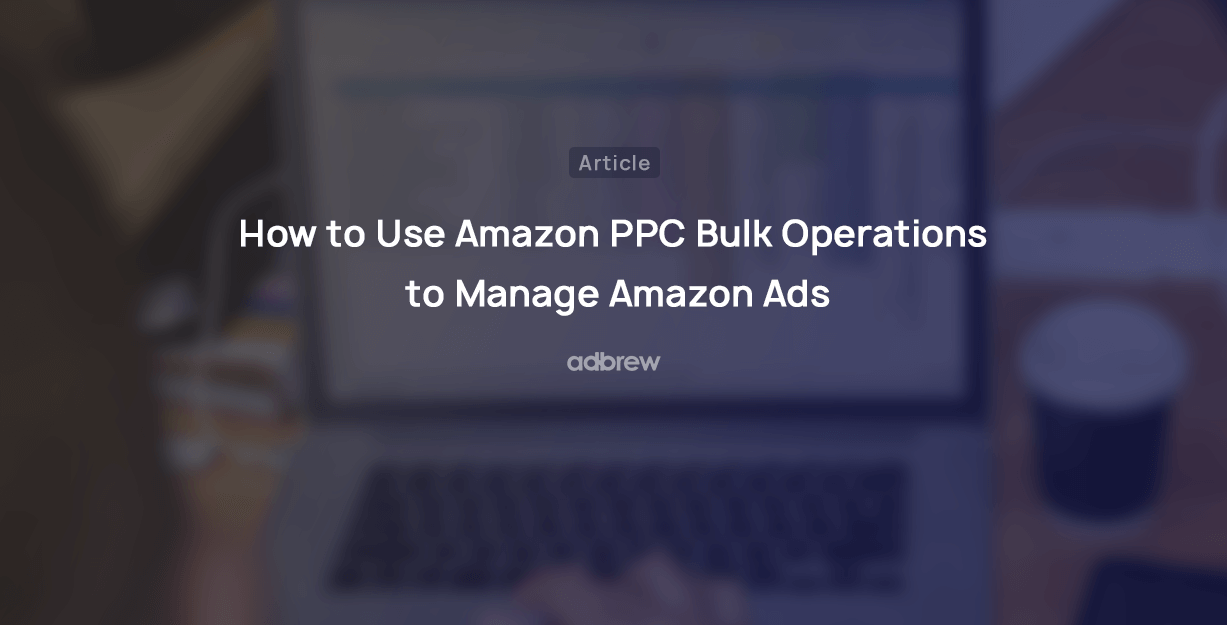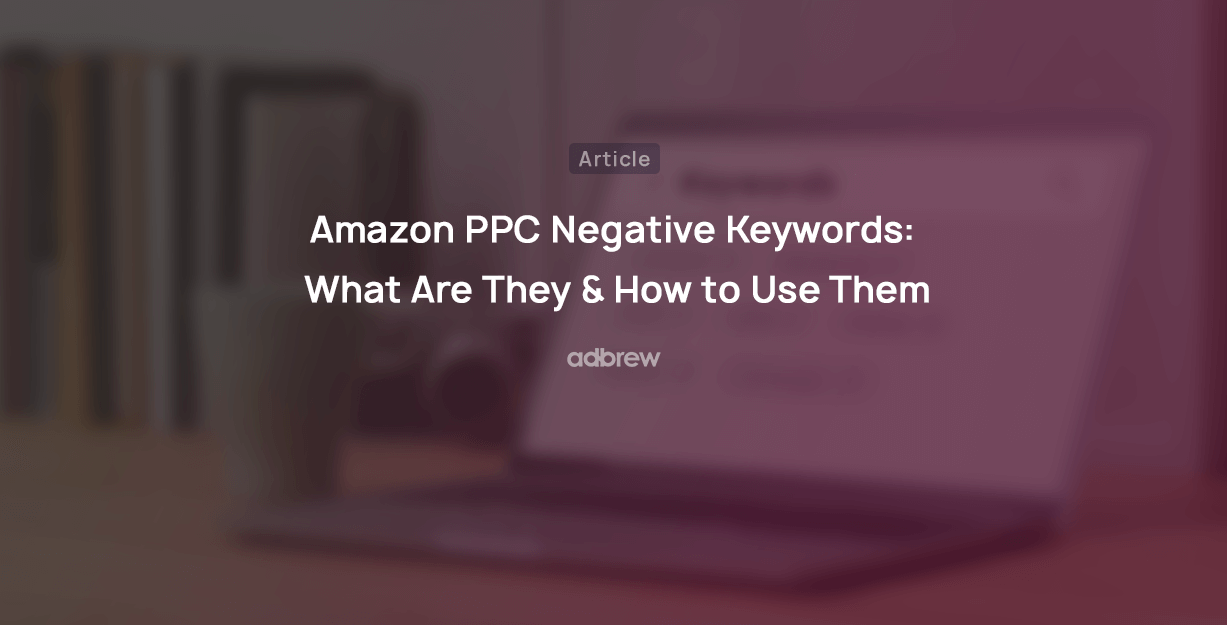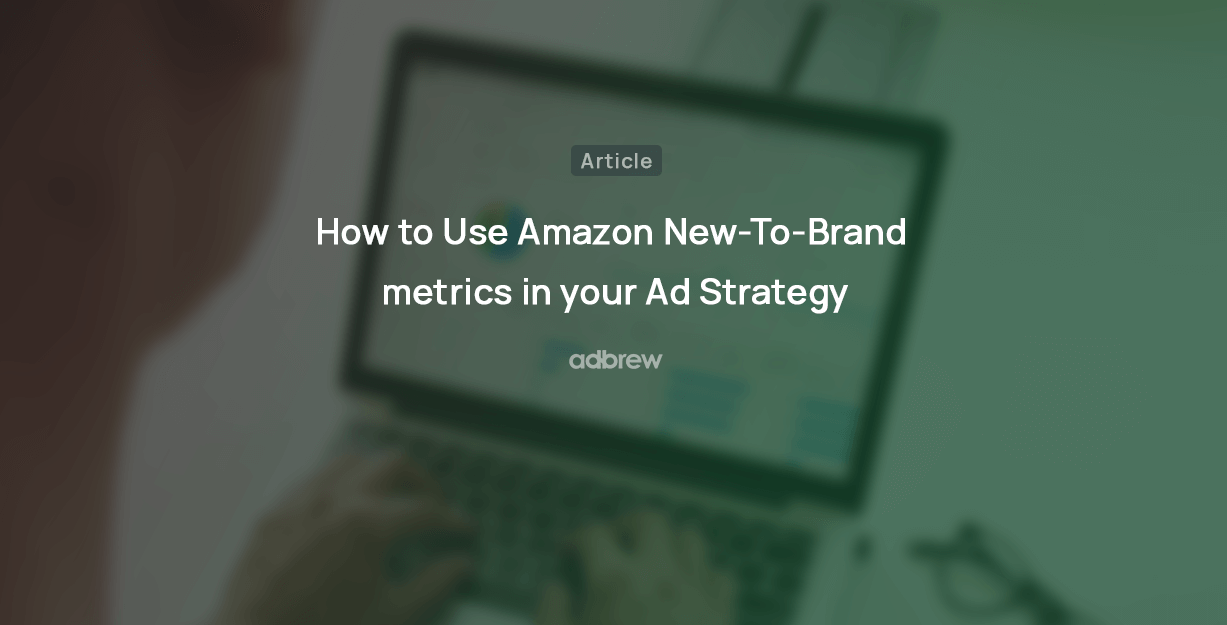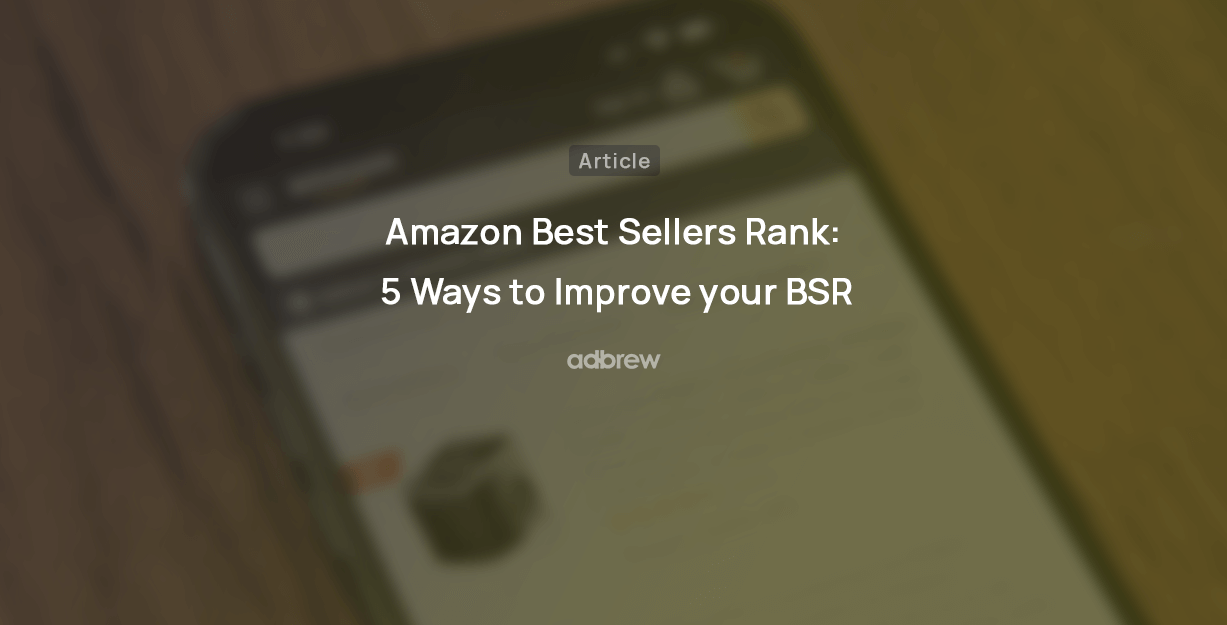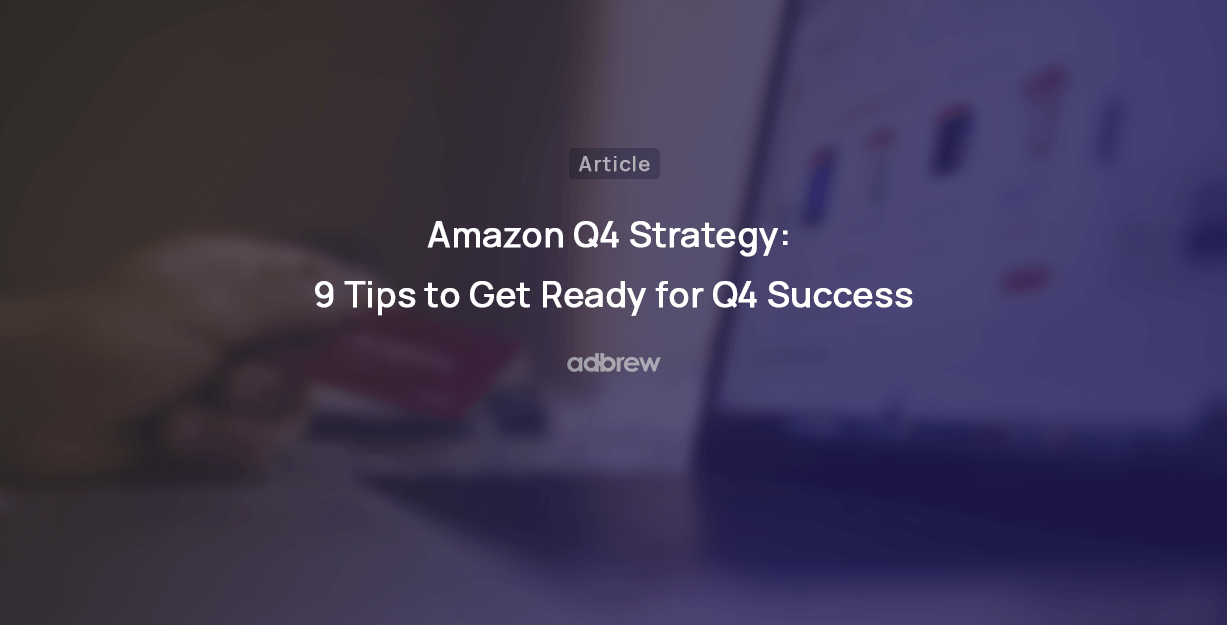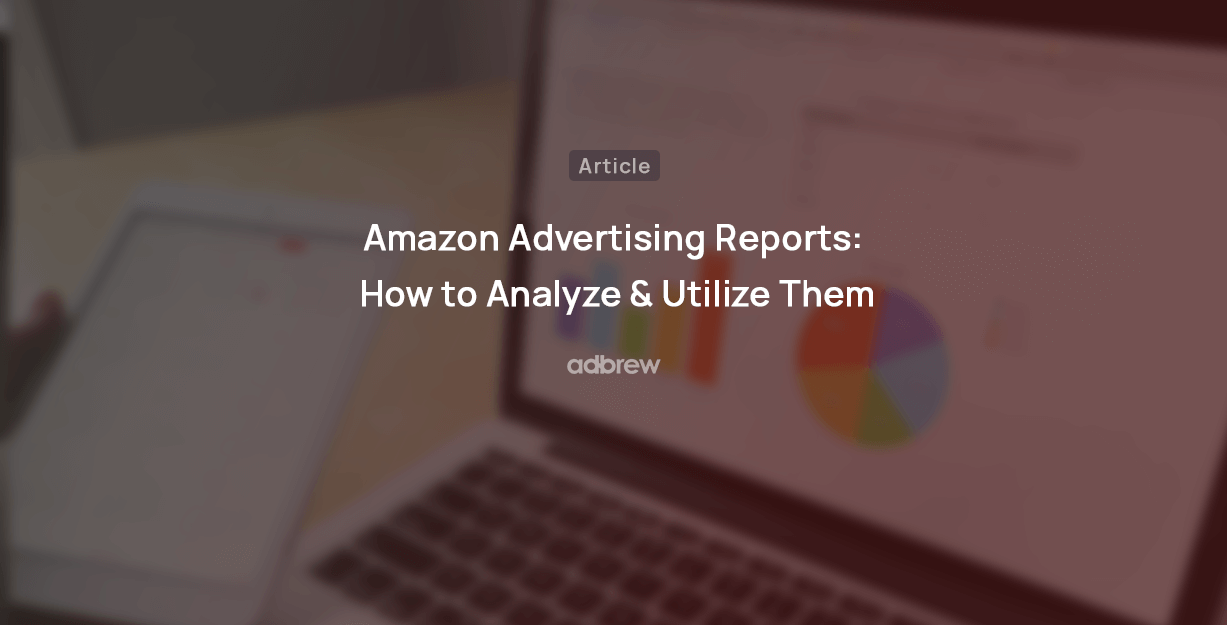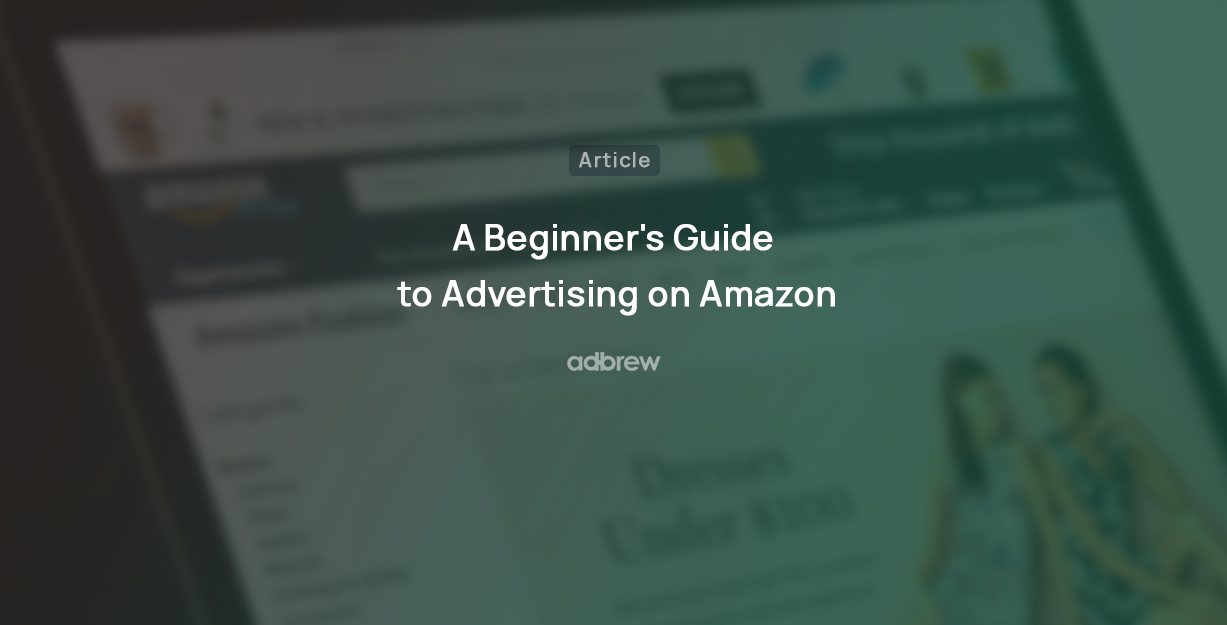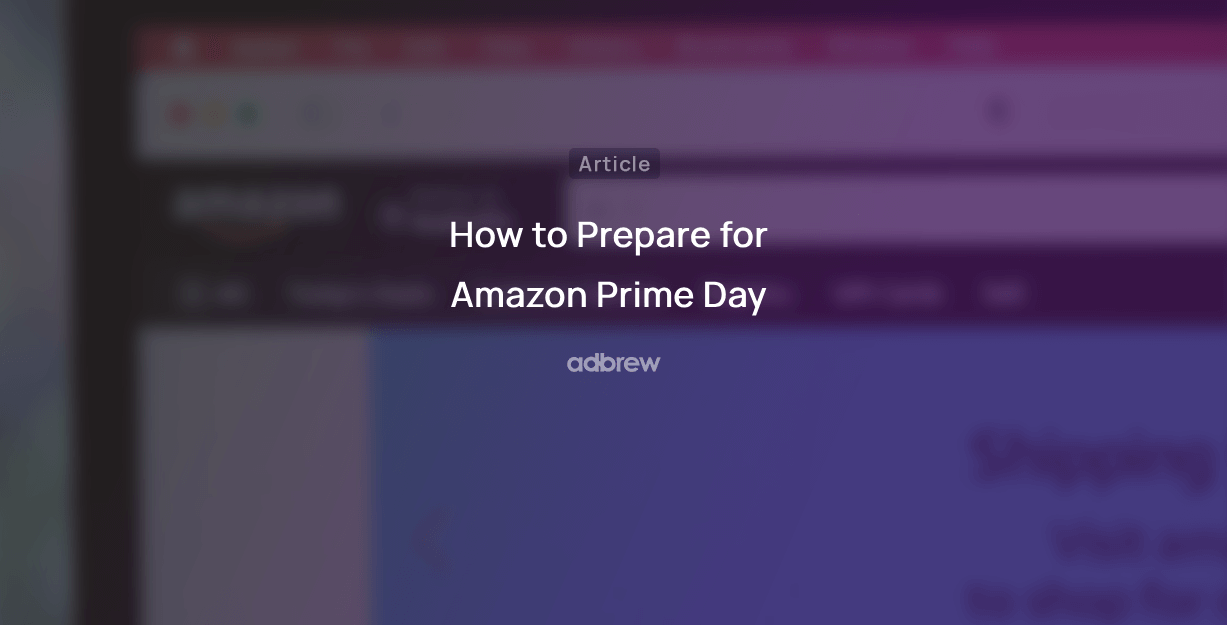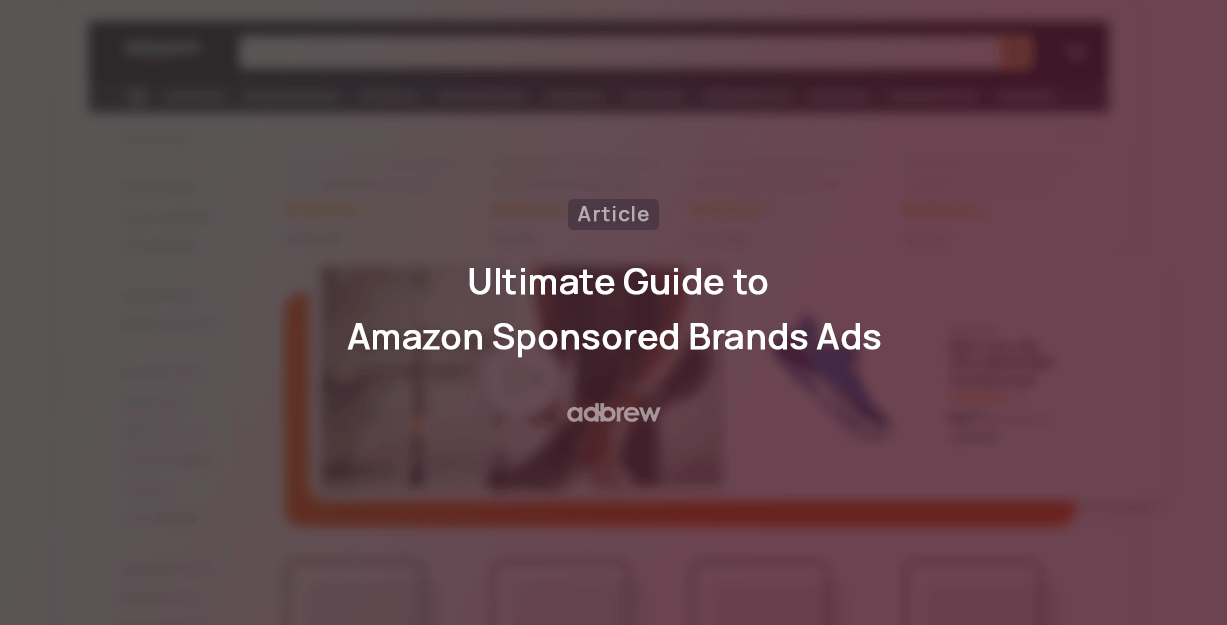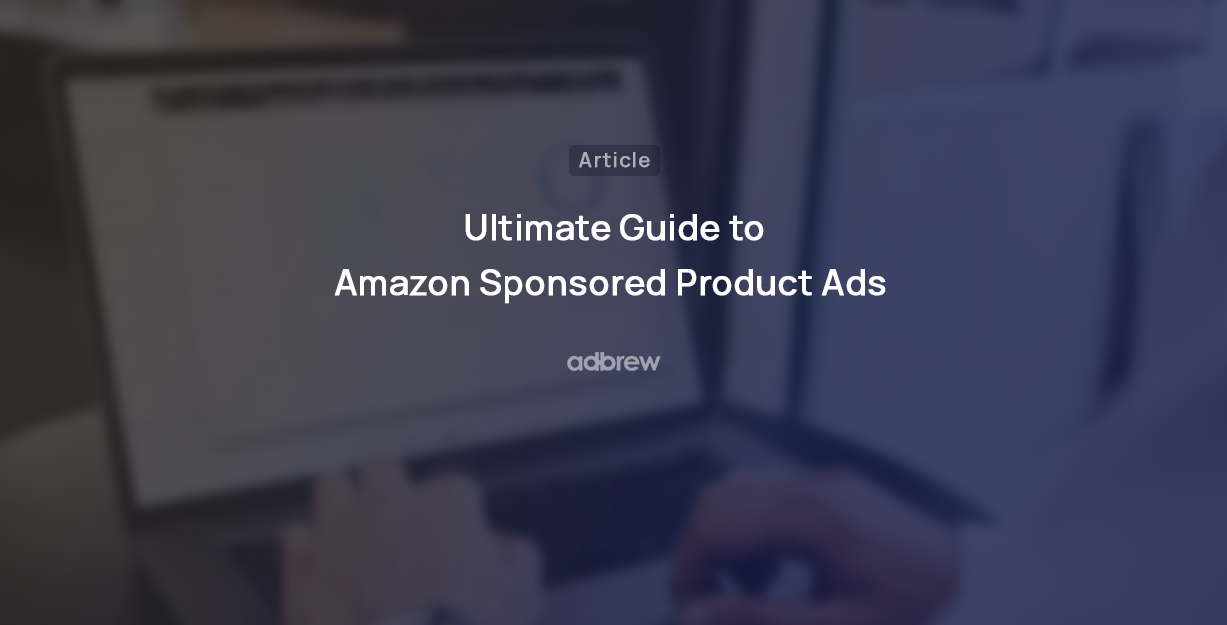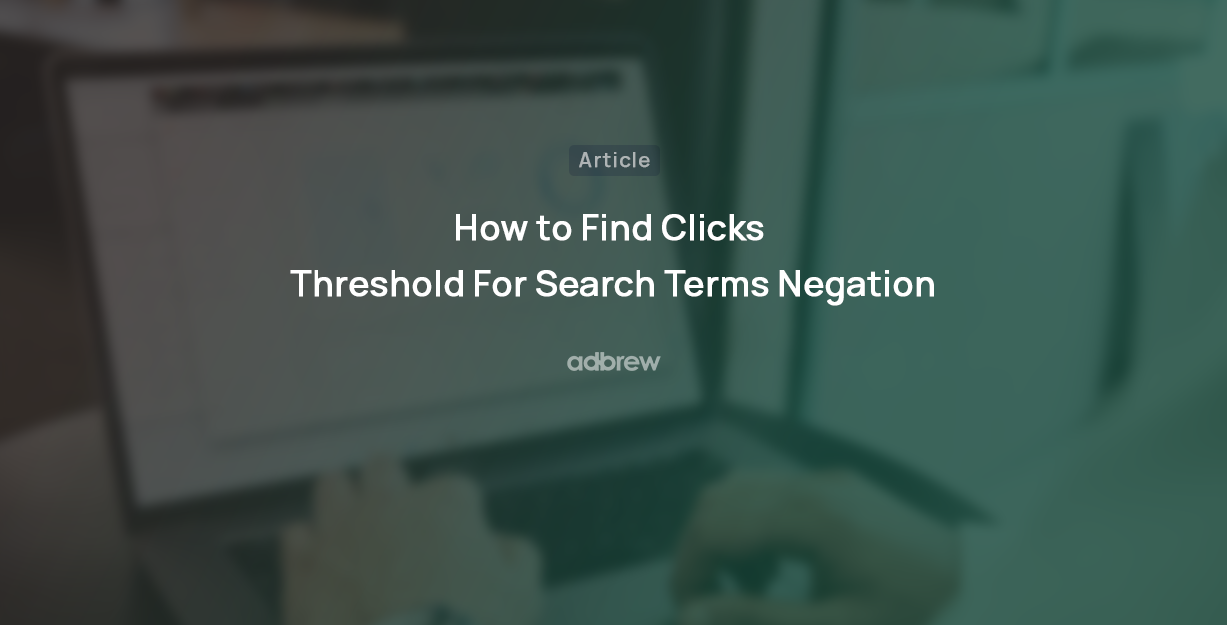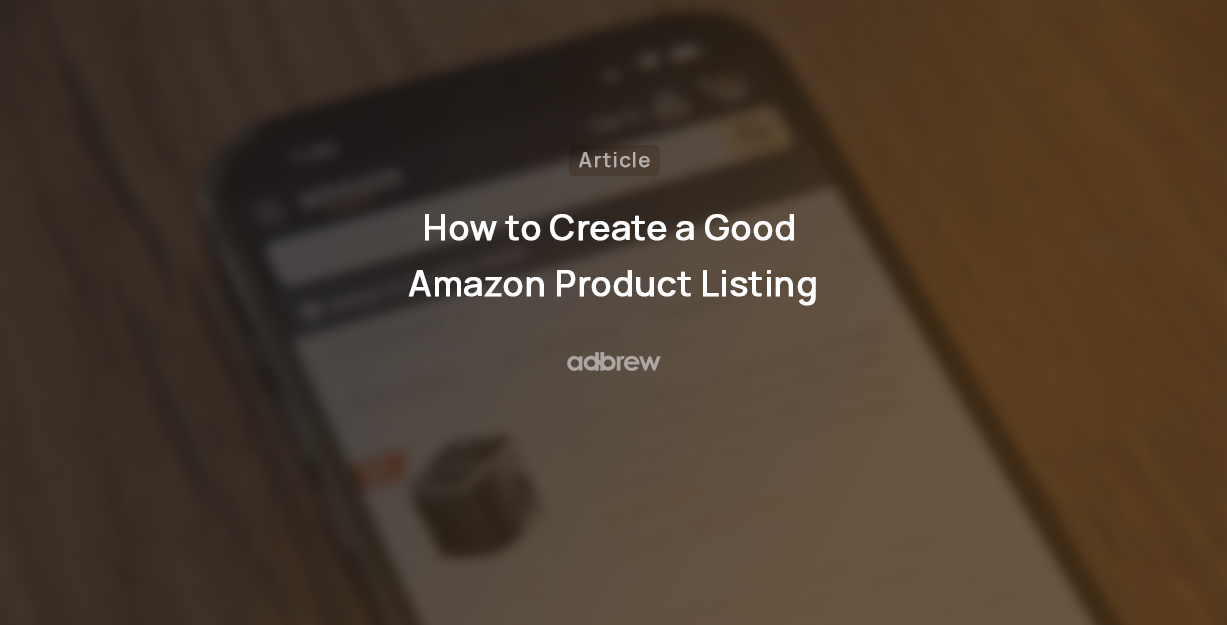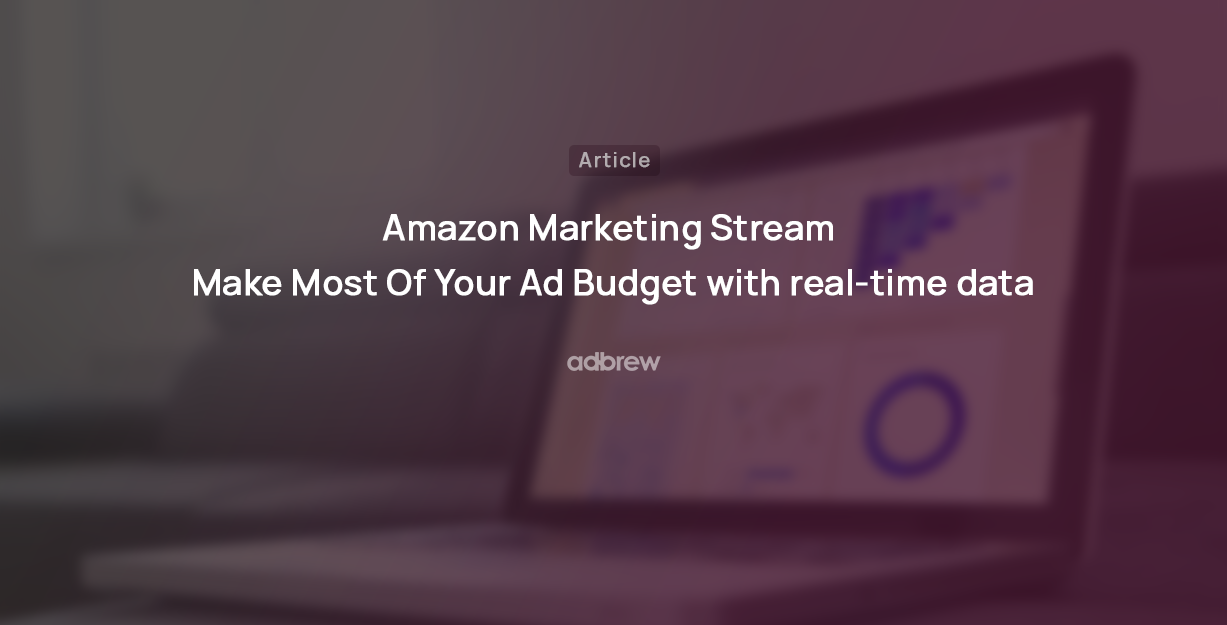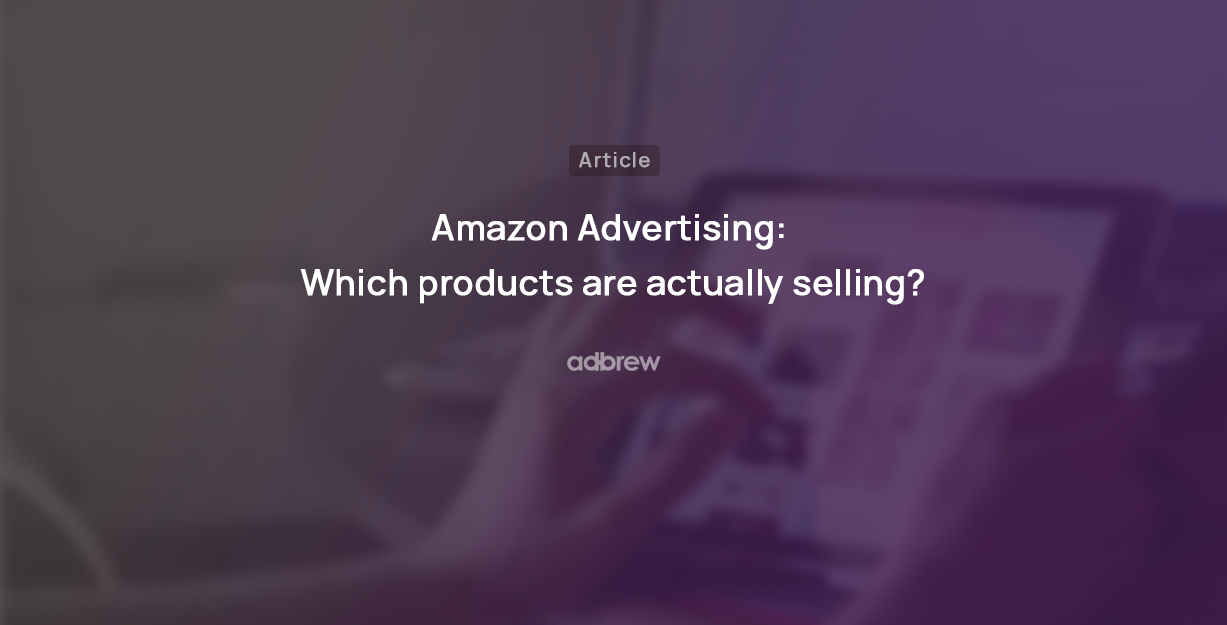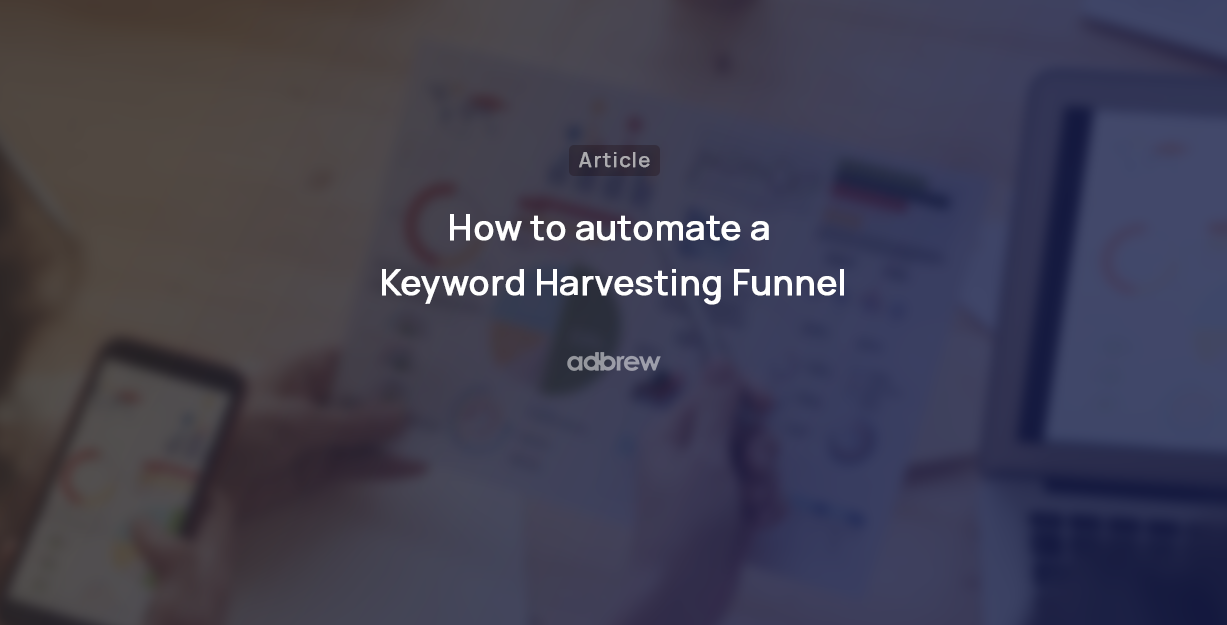Amazon Advertising Basics: A Beginner’s Guide to Using Amazon Ads
30 Jul 2023
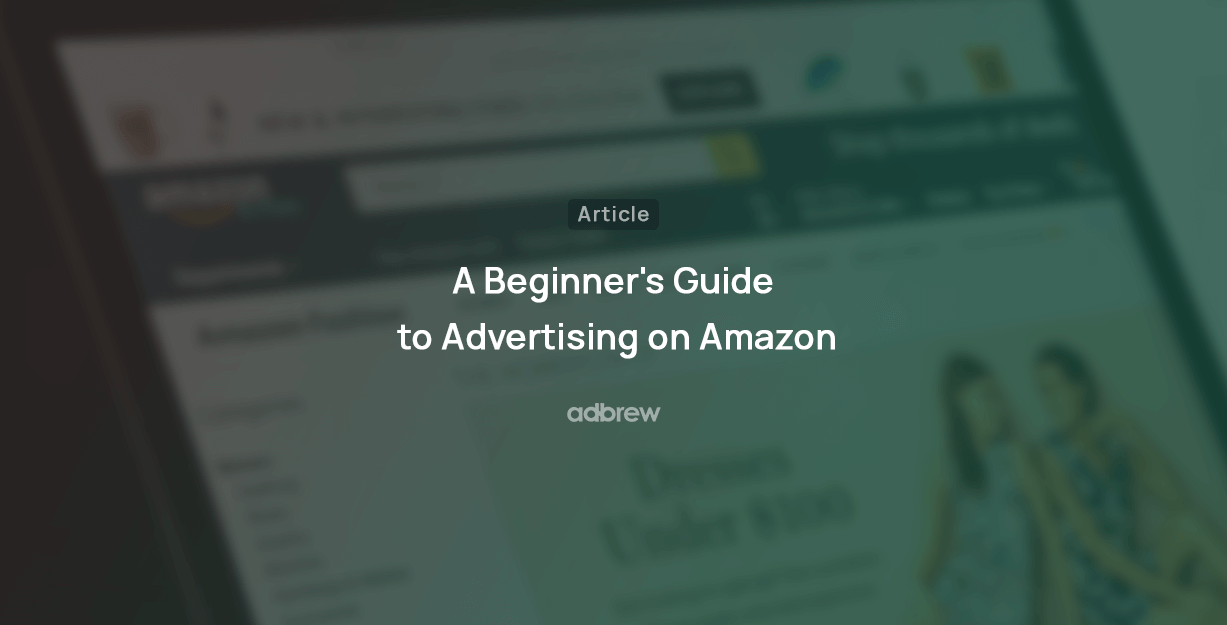
Whether you’ve just launched a new product or have been selling on Amazon for a while, advertising on the platform is no longer a choice – it’s a must.
With the increasing competitiveness of organic search results, Amazon advertising provides a simple way to quickly show your product to potential customers.
Not sure how Amazon advertising works? No worries; this guide will give you a clear overview of what Amazon advertising involves, how it works, and how you can effectively use it to boost your brand’s presence on Amazon.
What is Amazon Advertising?
Amazon Advertising is a platform that allows businesses to promote their products to millions of potential customers who are actively browsing and shopping on Amazon.
This advertising ecosystem encompasses various ad formats, including Sponsored Products, Sponsored Brands, Sponsored Display, and Video Ads. Advertisers can use these tools to target specific keywords, products, and audiences to increase product discoverability and drive traffic to their listings.
Amazon Advertising operates on a pay-per-click model for many of its ad formats, allowing businesses to pay only when users click on their ads. The precise amount you pay depends on several factors, including the ad type, the specific keywords or products you opt to target, and the degree of competition within your niche.
Why are Amazon Ads important for sellers?
Now that you understand what Amazon Ads are, let’s explore why they are important.
According to Statista, as of June 2022, Amazon holds a staggering 37.8% share of the US e-commerce market.
As the number of consumers visiting Amazon for online shopping continues to rise, brands are presented with a golden opportunity to showcase their products to the ideal audience and increase sales.
However, with rising competition and Amazon increasing the number of ad placements, ranking on the first page of organic search results for any keyword has become harder than ever before.
And considering that 70% of Amazon customers never click past the first page of search results, running ads for your product becomes crucial.
With a variety of Amazon advertising solutions available, you can strategically showcase your product to the right audience in the right place, preventing it from getting lost among a sea of competitors.
Types of Amazon Ads
Amazon provides four types of ads, each serving a distinct purpose and set of goals:
- Amazon Sponsored Products Ads
- Amazon Sponsored Brands Ads
- Amazon Sponsored Display Ads
- Amazon Sponsored TV Ads
Let’s take a closer look at how each ad format appears on Amazon and understand when it’s best to use each one.
Amazon Sponsored Products (SP) Ads
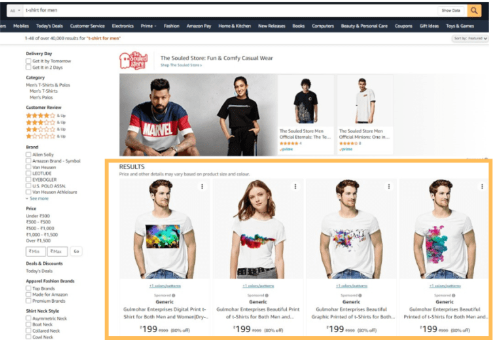
Sponsored Product ads are the most popular ad type of Amazon, helping you promote specific products within Amazon’s shopping results and relevant product detail pages through both automatic and manual targeting.
With automatic targeting, Amazon takes the lead in identifying and targeting the most relevant keywords and ASINs for your products. Conversely, manual targeting enables you to precisely select keywords and products for targeting. When a shopper clicks on your ad, they are directed to the corresponding product page.
Here are some benefits of using Sponsored Product ads:
- Sponsored product ads look very similar to organic results on Amazon and get intermixed with Amazon search, not hampering the customer shopping experience. This leads to a usually higher click-through rate compared to other ad types
- Automatic targeting makes it super easy for anyone to launch a Sponsored Products campaign without any prior performance marketing experience.
- If your bids are competitive enough, your ad can appear in the first 4 search results (top of search results), which is usually the most viewed placement on Amazon, giving your product high visibility among a relevant audience.
- If used wisely, Sponsored Products ads can also help you increase the BSR (Best Sellers Rank) and organic ranking of your product.
Interested in learning more about how to use Sponsored Product ads? Check out our ultimate guide to Sponsored Product Ads.
Amazon Sponsored Brand (SB) Ads

The Sponsored Brands campaign, also known as Amazon Headline Search Ads, provides an advanced advertising solution exclusively for sellers enrolled in the Brand Registry program.
These ads allow you to display your brand logo, a custom headline, a creative image, and up to three products. This comprehensive presentation offers potential customers a clear view of your brand, effectively boosting brand awareness.
Here are some advantages of using Sponsored Brand ads:
- Sponsored Brand Campaigns provide a strategic advantage by directing potential buyers to your store page, product detail page, or a custom landing page. This approach minimizes the distraction of competing products, increasing the chances of conversion as buyers focus solely on your product within the store page.
- Utilizing customized and visually appealing creatives in your Sponsored Brand campaigns allows you to weave a unique brand story. This storytelling approach fosters awareness and establishes long-term brand recall among potential customers.
- Video ads that are part of the Sponsored Brands ads are one of the most effective solutions to showcase your product virtually to potential audiences and increase consideration and conversion for your product.
Interested in learning more about how to use Sponsored Brands ads? Checkout our ultimate guide to Sponsored Brands Ads.
Amazon Sponsored Display (SD) Ads
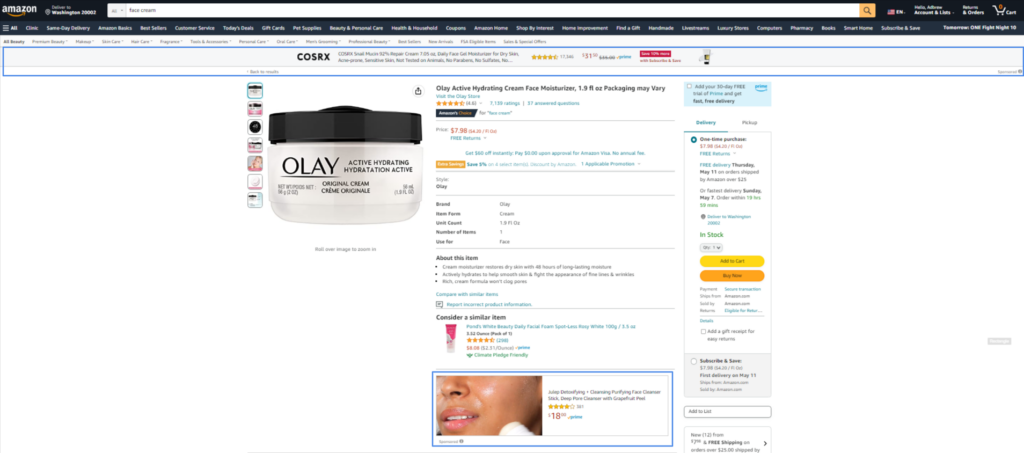
Amazon Sponsored Display ads (also known as Product Display Ads) enable you to engage with shoppers throughout their purchase journey, both on and off Amazon.
In contrast to Sponsored Brands and Sponsored Product Ads, Display Ads offer a fresh approach to reaching your target audience. Instead of relying on keyword targeting, these ads allow you to focus on specific audiences based on their interests, shopping behavior, and past product views or purchases on Amazon.
While similar to Sponsored Product ads, you can target an individual ASIN or category; audience targeting remains the biggest advantage of Sponsored Display ads.
Whether you aim to target audiences by their interests to boost top-of-funnel engagement or prefer focusing on those who have already shown interest in your product to increase bottom-of-the-funnel conversions, Sponsored Display has got you covered.
These ads appear on product detail pages, customer review pages, top-of-offer listing pages, and search result pages.
Here are some benefits of using Sponsored Display ads:
- Retarget potential customers who have viewed your product listing in the last 180 days but did not make a purchase.
- Retarget existing customers who have purchased your product in the last 365 days to increase repeat purchases.
- Increase awareness about your product by targeting the top-of-the-funnel audience based on their interests, behaviors, and demographics.
- Advertise your product not only on Amazon but also on other third-party websites and apps.
Interested in learning more about how to use Sponsored Display ads? Checkout our ultimate guide to Sponsored Display Ads.
Amazon Sponsored TV Ads
Amazon Sponsored TV Ads is a self-service advertising solution specifically designed for brands selling on Amazon to reach new audiences on streaming TV services. Imagine traditional TV ads but with all the flexibility and targeting capabilities of Amazon’s advertising platform.
Here are some of the advantages of using Amazon Sponsored TV Ads:
- Reach new audiences: Connect with potential customers who spend time watching streaming content, even if they haven’t been to Amazon before
- Boost brand awareness: Build brand recognition and tell your story through video ads
- Drive sales: Make it easy for viewers to purchase your products directly from the ad
- Flexible and affordable: No minimum spend is required, you only pay when someone clicks on your ad.
How much bugdet you should allocate to each ad type?
When you are running Amazon Ads, it is ideally recommended to allocate 70% of your budget to Sponsored Product Ads, 20% to Amazon Brand Ads, and 10% to Amazon Display Ads for best outcomes.

Amazon PPC (pay-per-click) Ads basic terminology
Before you begin advertising on Amazon, it is important to familiarize yourself with some of the key concepts and terminology of Amazon ads. This will help you launch campaigns faster and navigate through the Ad console with ease.
Portfolio
The Portfolio feature on Amazon allows you to group and arrange multiple campaigns together. You can choose to organize campaigns based on various criteria such as brand, product category, or season, making it easy to keep track of a set of campaigns.
Another advantage of grouping similar campaigns under a portfolio is the ability to set a budget threshold, ensuring that the campaigns within that portfolio do not exceed the specified budget limit.
Budgets
Budgets in Amazon Ads refer to the maximum amount you’re willing to spend on your campaign each day. If your campaign spends less than your daily budget, the leftover amount from the previous day can be used to increase your campaign’s daily budget by up to 100% on other days of the month. It’s crucial to set a budget high enough to keep the campaign running throughout the day to avoid missing sales opportunities.
Keyword Match Types
Keyword match types help Amazon ads determine how closely you want your keywords to match potential customers’ search queries. These match types include broad match, phrase match, and exact match.
Targeting
Targeting is the way you define the context in which you want your ads to appear. Depending on the ad type you are using, you’ll have different targeting options to choose from. With Sponsored Product and Sponsored Brands ads, you can target keywords, products, and categories. With Sponsored Display ads, you can target products, categories, and audiences.
Search Terms
Search terms are the keywords or products that the customers click on to reach your product. Except for exact match keywords and ASIN targeting, your search term can be completely different from the keywords or ASINs you have targeted in your ad. For example, if you have targeted the keyword “dog toys” in a broad match, a customer can also go to your product after searching for “pet food”.
Negative Keywords
Negative targets are used to prevent your ad from showing on unwanted search terms. For example, if you are targeting the keyword “Shoes” in the phrase match type, your ad can also appear when shoppers search for “Waterproof shoes.” However, if your shoes are not waterproof, you can simply add the keyword “waterproof shoes” as a negative target to prevent your ads from displaying on irrelevant search terms. If used effectively, the negative target can be a powerful tool to reduce wasted ad spend and improve the Return on Ad Spend (ROAS) of the campaign.
Amazon Ads Reports
Amazon Sponsored Ads reports are downloadable reports that can be accessed from the Measurement & Reporting tool. You will find multiple reports for each ad type that help you understand the performance of your ads and find optimization opportunities. Some of the most useful reports are the search term report, the advertised product report, and the campaign report.
Recommendations
This is a new feature from Amazon where they provide you with recommendations around bids, budget, products, and campaigns. Here are some of the common recommendations that you will come across:
- New campaign launch opportunities to drive more awareness, consideration, and purchases for your product.
- Increase bids on your low impression targets to reach more shoppers.
- Advertise more products in your top campaigns to drive sales.
- Increase the budget for campaigns that frequently exceed their budget.
Need Smart Recommendations for your account?
Adbrew’s PPC Recommendations engine offers practical recommendations covering bids, budget, targeting, search term negation, target harvesting, and placement optimization. In contrast to recommendations in the Amazon Ad Console, these suggestions are tailored to your account’s specific goals. What’s noteworthy is that you can easily implement these recommendations with a single click, streamlining the process of optimizing and enhancing the performance of your ad campaigns.
Frequently Asked Questions

What is bidding in Amazon ads?
Bidding in Amazon ads refers to the process where advertisers set the maximum amount they are willing to pay for their ad to be shown to potential customers. Higher bids increase the chances of the ad being displayed, but the final cost depends on competition and ad relevance.
How much does it cost to run PPC on Amazon?
The cost of running pay-per-click (PPC) ads on Amazon varies and is dependent on the competition in your niche. Depending on how competitive your product category is, you can expect to pay anywhere from $0.15 to $10 per click.
How long should I run PPC on Amazon?
The duration of a PPC campaign on Amazon depends on your advertising goals and budget. You can run a PPC campaign for as long as you want, but it is recommended to regularly review and adjust your campaign to optimize performance and ensure it is meeting your desired outcomes. Some advertisers run PPC campaigns for a specific event or promotion and end the campaign after the event is over, while others run ongoing campaigns as a long-term advertising strategy.
Is Amazon advertising worth it?
Absolutely! With Amazon attracting a staggering 2.2 billion visitors each month and boasting higher conversion rates than many other advertising platforms due to the strong purchase intent of its users, running ads on Amazon is undoubtedly worth it for any seller looking to maximize their sales and reach a vast audience of potential customers.
How to optimise Amazon Ads?
To optimize Amazon Ads campaigns, focus on relevant keywords, create compelling ad copy, set appropriate bids, monitor performance regularly, and adjust campaigns based on data-driven insights.
What is the best Amazon PPC strategy?
There isn’t any specific “best Amazon PPC strategy” as every brand on Amazon is different. Nevertheless, a strong Amazon PPC strategy involves thorough keyword research, targeted campaigns, optimized ad copy, and continuous monitoring and optimization to minimize ACOS (Advertising cost of sales)
What is Amazon Marketing Services (AMS)?
Amazon Marketing Services (AMS), now officially called Amazon Advertising Console, is a suite of advertising tools and services that allows businesses to promote their products on Amazon. Think of it as a toolbox for sellers and vendors to reach a massive audience of potential customers who are already actively shopping on the platform.
Amazon advance strategy guides:
- How to Find Click Threshold for Search Term Negation in Amazon Ads
- How to automate a Keyword Harvesting Funnel?
- How to Automate Amazon PPC Budget?
- How to set up dayparting in Amazon Ads?
- How to leverage Amazon new-to-brand metrics?
- How to reduce ACOS on Amazon?
- How to Use Amazon PPC Bulk Operations to Manage Amazon Ads
Ready to get started with Adbrew?
Adbrew provides cutting-edge automation, expertly curated strategies, and data-driven insights for brands to thrive on Amazon.
Final Thought
Advertising on Amazon becomes easy once you understand the fundamental concepts and terminology. We hope that this guide has equipped you with a solid understanding of the basic principles behind Amazon ads. For those seeking even more comprehensive insights into Advanced Amazon advertising strategy, feel free to explore our blog.
Recent Posts
Take your Amazon PPC advertising to the next level

Related Blogs
Running Amazon ads with an empty shelf? You might as well be burning cash. Many sellers focus on optimizing bids, […]
In today’s competitive digital landscape, growing your eCommerce brand requires more than just a standalone website or a single marketplace […]
Are you an Amazon seller looking to offload excess inventory or seasonal items? The Amazon Outlet program might be just […]
Turning your bookshelf into a source of income has never been easier, thanks to Amazon. If you have books collecting […]
If you’re an Amazon seller, encountering an account suspension or policy violation can be a significant setback. But with the […]
Introduction Amazon dropshipping is an increasingly popular way to run an e-commerce business without the need to store or ship […]
Introduction The Amazon Influencer Program is a great way for content creators to turn their influence into earnings. This program […]
Introduction Amazon Kindle Direct Publishing (KDP) is a platform that allows authors to self-publish their work as ebooks or print […]
Selling on Amazon offers many opportunities for businesses, but it’s essential to understand the costs involved with Fulfillment by Amazon […]
Walmart is quickly becoming a popular platform for brands and sellers to connect with more customers. One way to boost […]
In today’s competitive retail landscape, reaching the right audience at the right time is crucial for success. Walmart’s Demand Side […]
In today’s fast-paced eCommerce landscape, shoppers demand speedy delivery. Walmart has responded by offering 2-day shipping, giving sellers on the […]
Running successful Walmart advertising campaigns takes more than just setting them up—it requires ongoing optimization. A Walmart PPC (Pay-Per-Click) audit […]
Are you ready to tap into the massive potential of Walmart Marketplace? With millions of daily visitors and a loyal […]
In the world of e-commerce, Amazon and Walmart reign supreme, dominating the retail landscape. These two giants offer vast opportunities […]
Are you a brand owner struggling to maintain control over your products on Walmart? The Walmart Brand Portal is here […]
Are you dreaming of a passive income stream from your Walmart store? The allure of an automated Walmart store with […]
Are you a seller looking to tap into the massive market of private-label brands? Walmart, one of the world’s largest […]
Tired of your Walmart products getting lost in the shuffle? In this blog post, we’ll dive into the essential strategies […]
Ever wondered why some Amazon sellers seem to have a magic touch with product bundles? It’s not luck—it’s strategy. Bundling […]
If you’re a Walmart seller looking to grow your business through retail media, Walmart Connect could be a game-changer. But […]
If you’re an Amazon seller, you may have noticed a portion of your inventory marked as “reserved” without knowing exactly […]
Have you ever wondered what managing your own Amazon orders is like? Switching from Fulfilled by Amazon (FBA) to Fulfilled […]
Walmart Marketplace offers an exciting opportunity for sellers to reach a vast audience by listing their products on Walmart’s platform. […]
Selling products on online marketplaces has become a vital strategy for businesses to reach more customers. If you’re looking to […]
Are you a Walmart seller aiming to improve your visibility and sales? In this blog, we will explore Walmart SEO, […]
As an Amazon brand owner, maintaining control over your product listings is essential to protect your brand’s reputation and customer […]
Improving your sales on Walmart starts with understanding how to consistently win the Buy Box. Securing this position can make […]
Are you an Amazon seller struggling to increase your rating? A high seller rating is crucial for attracting new customers […]
As an Amazon seller, providing the best customer service is paramount to maintaining a positive customer experience. One key metric […]
If you’re an Amazon seller and curious about Amazon IPI score and its impact on your business, this blog post […]
Introduction Starting an Amazon subscription box business presents a unique opportunity to tap into the growing trend of curated, recurring […]
Thinking about using Fulfillment by Amazon (FBA) to sell on the Amazon marketplace? Awesome! But before you box up your […]
Thinking about using Fulfillment by Amazon (FBA) to streamline your Amazon business? While FBA offers a convenient way to store […]
For FBA sellers, the Amazon Buy Box is the holy grail of product visibility. But with constant algorithm updates and […]
Have you ever wished you could offer customers pre-made packages of complementary products without the hassle of physically bundling them […]
Have you ever wanted to create a more branded and engaging presence for your products on Amazon? An Amazon storefront […]
Are you storing items on Amazon for a while? If so, it’s important to be aware of Amazon long term […]
When selling products on Amazon, it is crucial to follow their packaging requirements, rules, and guidelines. Proper packaging ensures that […]
Amazon A/B testing can significantly enhance your product listings and boost sales. This method, also known as split testing, involves […]
Have you ever browsed Amazon and stumbled upon a product with a little blue badge that reads “Amazon’s Choice“? It […]
Amazon FBA vs FBM needs to be explored, when we ship products and handle orders while selling on Amazon. With […]
Ever feel like you’re missing something in your Amazon PPC Search Terms report? You might be! Sure, they show what […]
Amazon can be a fantastic platform to reach new customers, but keeping your virtual shelves stocked can get tricky. That’s […]
Navigating Amazon as a new seller can be tough, but there are tools and programs available to help such as […]
Have you ever scrolled through an Amazon search result page and noticed product recommendations nestled alongside the standard listings? These […]
Finding time for yourself while selling on a competitive marketplace like Amazon can be challenging. As a seller, your main […]
Starting an E-commerce business has become quite easy with Amazon, but it also brings heavy competition. Millions of Amazon sellers […]
As an Amazon seller, you know the importance of getting your products seen. But with millions of listings, how do […]
Ever scrutinized an Amazon product page and noticed the cryptic “Sales Rank”? Wondering what it means and how it impacts […]
Millions of products compete for customer attention on Amazon’s search results page, making it tough for your brand to stand […]
Are you selling products on Amazon and looking to increase your sales? This blog is for you. We’ll share tips […]
Are you an Amazon seller looking to boost your brand visibility and profitability? Are you feeling stuck in the cycle […]
Ever wonder what drives your online shopping habits? Perhaps a captivating product description, or an eye-catching professional photo? As it […]
For any seller on Amazon, understanding the A9 algorithm is crucial for success. This complex algorithm dictates which products appear […]
Are you an Amazon seller looking to turn those single purchases into recurring revenue? Look no further than the Subscribe […]
Amazon has become a go-to platform for all e-commerce business owners to launch and scale their e-commerce brands online. But […]
Mother’s Day, a time to celebrate the incredible women who raised us, is a prime opportunity for Amazon sellers to […]
In the ever-competitive landscape of Amazon, ranking high in organic search results is crucial for driving sales. While you might […]
If you’ve ever found yourself scratching your head over Sessions and Pageviews on your Amazon business reports, you’re not alone. At […]
Amazon is a massive marketplace, attracting millions of customers with diverse needs, preferences, budgets, and mindsets for shopping. To effectively […]
With Amazon boasting over $575 billion in retail sales for 2023, it’s no wonder so many sellers flock to its […]
Advertising on Amazon through pay-per-click campaigns can significantly enhance product visibility and sales for sellers. However, mastering Amazon PPC, with […]
Have you heard of the terms copyright infringement and plagiarism? If so, then Amazon Brand gating won’t be unfamiliar to […]
If you are running ads on Amazon, you’ll come across a sea of data in your advertising console. But does […]
Have you heard of the terms copyright infringement and plagiarism? If so, then Amazon Brand gating won’t be unfamiliar to […]
In the fast-paced world of e-commerce, where shoppers are bombarded with choices, standing out on platforms like Amazon is paramount […]
Are you planning to start an Amazon FBA store? If so, you’ll encounter a unique term – FNSKU. This seemingly […]
As an Amazon seller, you understand the power of reviews. They’re the lifeblood of trust and conversion on the platform. […]
Are you struggling to get Amazon reviews on your product? Well, you are not alone! Reviews are the backbone of […]
Are you tired of bland Amazon product listings failing to grab attention? In today’s competitive online marketplace, standing out is […]
As an Amazon seller, understanding how your brand performs throughout the customer journey is vital for success. However, until recently, […]
As an Amazon seller, optimizing your business and maximizing profits relies heavily on data analysis. One invaluable tool for gaining […]
Are you struggling to get noticed on Amazon’s massive platform? Do your products get lost in a sea of similar […]
For any Amazon seller getting into the world of sponsored advertising, understanding the Advertising Cost of Sale (ACoS) is crucial. […]
A well-executed Amazon product launch strategy can be the key to unlocking success and gaining a competitive edge. As the […]
In the ever-evolving landscape of e-commerce, distinguishing between keywords and search terms is vital for optimizing product visibility and driving […]
Ever felt like you are throwing darts in the dark when it comes to your marketing efforts outside Amazon for […]
Amazon, the e-commerce giant, has successfully concluded a robust business year with outstanding performance in quarter 4. The most recent […]
Picture this: you have a great product on Amazon, but it’s not selling well despite having attractive images and a […]
The advertising landscape is evolving, and viewers are rapidly migrating from traditional cable TV to streaming platforms. This presents a […]
Feeling lost in the Amazon discount jungle? Struggling to reach the right customers and entice them to make the purchase? […]
Are your products getting lost in the vast ocean of Amazon listings? Do you want them to stand out, rank higher, […]
For years, Amazon sellers were in the dark. They couldn’t see what keywords customers were using to find their products, […]
Selling on Amazon can be tough with so many others doing the same in your category. That’s why it’s super […]
For Amazon sellers, understanding their customers has often felt like navigating a maze without a map. The missing link? A […]
Have you ever felt like your Amazon advertising campaigns are lost in a tangled jungle of keywords? You’re not alone. […]
When did you last give your Amazon PPC account a checkup? Regular Amazon PPC audits are crucial to ensure the […]
Embarking on the path of online selling? If so, you’re likely aware that Amazon is your ultimate destination. With a […]
Ever felt like your product is lost in the vast Amazon jungle? You’re not alone. With millions of shoppers actively […]
Amazon Sellers selling on the Amazon marketplace usually utilize Amazon advertising without keeping a close eye on the TACoS metric. […]
The rush of Black Friday and Cyber Monday might be over, but the opportunity for continued sales growth extends beyond […]
In the fierce Amazon advertising domain, where competition rises and costs increase, understanding and keeping track of the right metrics […]
Have you ever felt the frustration of campaigns going out of budget, leading to missing out on potential sales, or, […]
Amazon PPC campaigns can be a powerful tool for driving traffic and sales to your products. However, without proper structure, they […]
Whether you are creating a new advertising campaign or optimizing existing ones, doing it manually from the Amazon ad console […]
Want to know what search terms people use to visit or purchase your product on Amazon? If yes, you’re in […]
When you are spending dollars or even more to get a click on your Amazon ads, you want to ensure […]
Are you an Amazon seller looking to maximize your profits and minimize your advertising costs? If so, you’re not alone. Many […]
Are you exclusively relying on traditional metrics such as CTR, CPC, CVR, or ROAS to make your campaign optimization decisions? […]
Navigating the ever-evolving landscape of Amazon’s online marketplace is essential for any seller looking to thrive on the platform. Among […]
As the holiday season approaches, businesses are gearing up for the highly anticipated Q4 rush. To ensure a successful Q4, […]
Do you regularly review your Amazon advertising reports? If not, you may be missing out on numerous opportunities. Amazon […]
Whether you’ve just launched a new product or have been selling on Amazon for a while, advertising on the platform […]
Amazon PPC bidding strategies that you choose play a significant role in the success of your Amazon Ads campaigns. As […]
Have you ever heard of a “catch-all campaign”? This single campaign can generate extra sales for you at a very […]
Amazon Prime Day is one of the largest global e-commerce sales events, attracting millions of customers worldwide. But how do […]
Are you looking to boost your brand’s visibility and drive more sales on Amazon? Look no further than Amazon Sponsored […]
Succeeding on Amazon in 2024 isn’t easy. Just listing your products and hoping for the best won’t work anymore. You […]
Are you bidding the same amount for all your ad placements on Amazon? If yes, then you’re missing out on […]
Whether you are looking to boost product discovery or target audiences further down the sales funnel who have already engaged […]
We, at Adbrew catalyze millions of dollars of ad spend monthly through our platform, with Sponsored Product Ads being the […]
Do you want to know how many clicks you should give a search term before adding it as negative in […]
Think of your product listing as a guiding light on the Amazon marketplace. It’s your chance to grab attention, tell […]
It is no longer a secret that shopping behavior on Amazon varies over the day. This is the reason why […]
Are you struggling to get the most out of your advertising budget on Amazon? Do you find that your campaigns […]
Ever run an Amazon Ad campaign and wondered why some sales weren’t directly linked to the products you advertised? That’s […]
If you’re managing Amazon PPC ads, it’s essential to have an effective and organized approach for target harvesting and movement. […]



